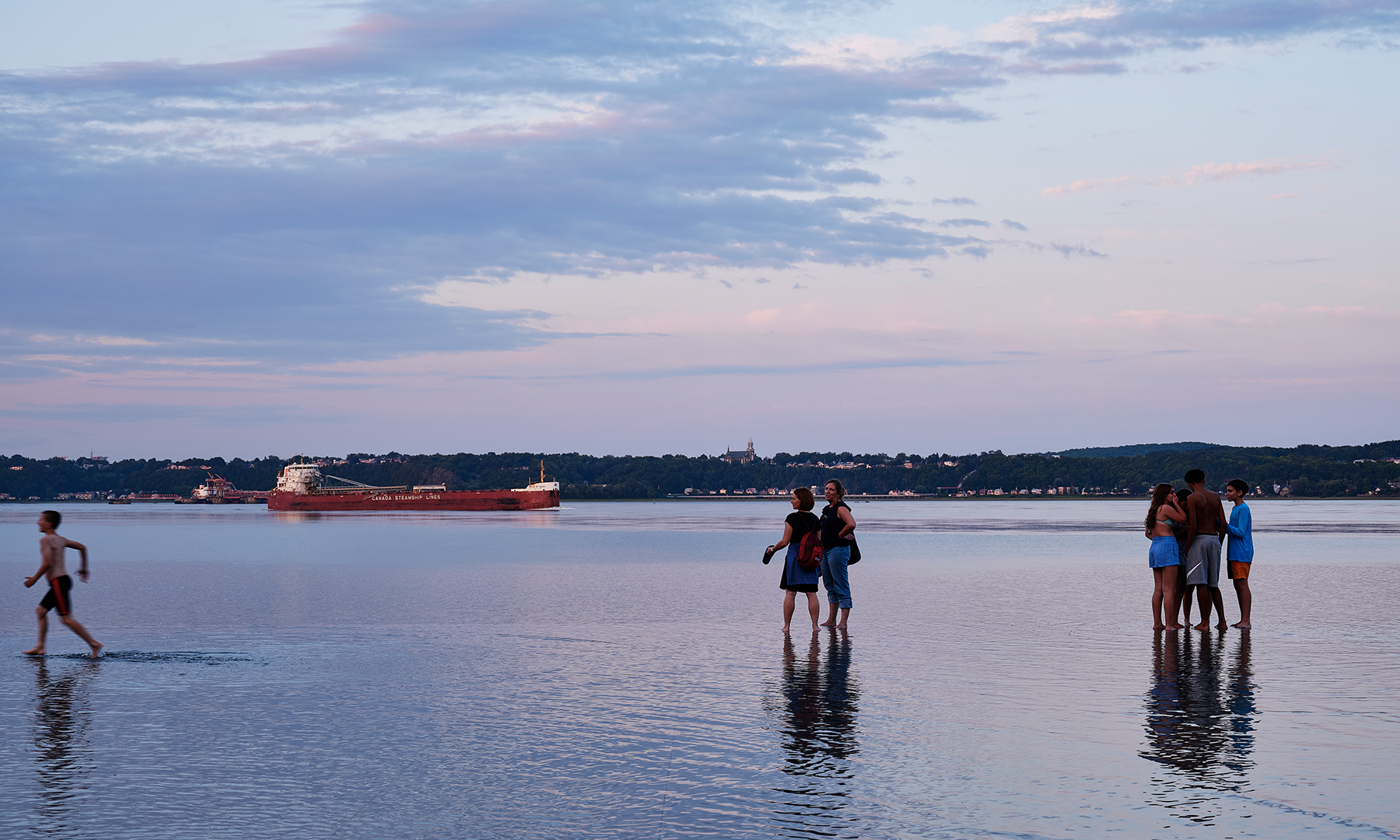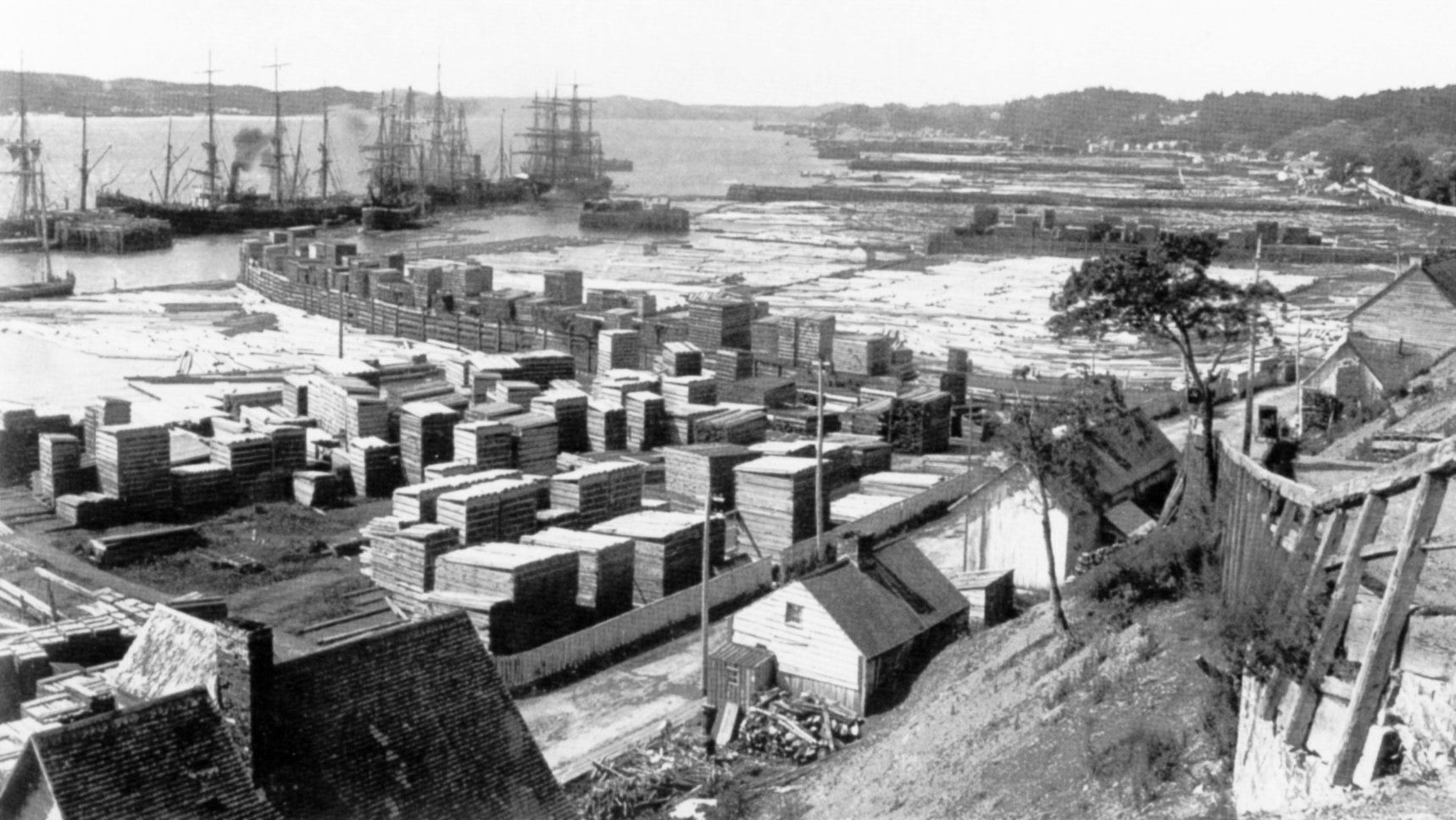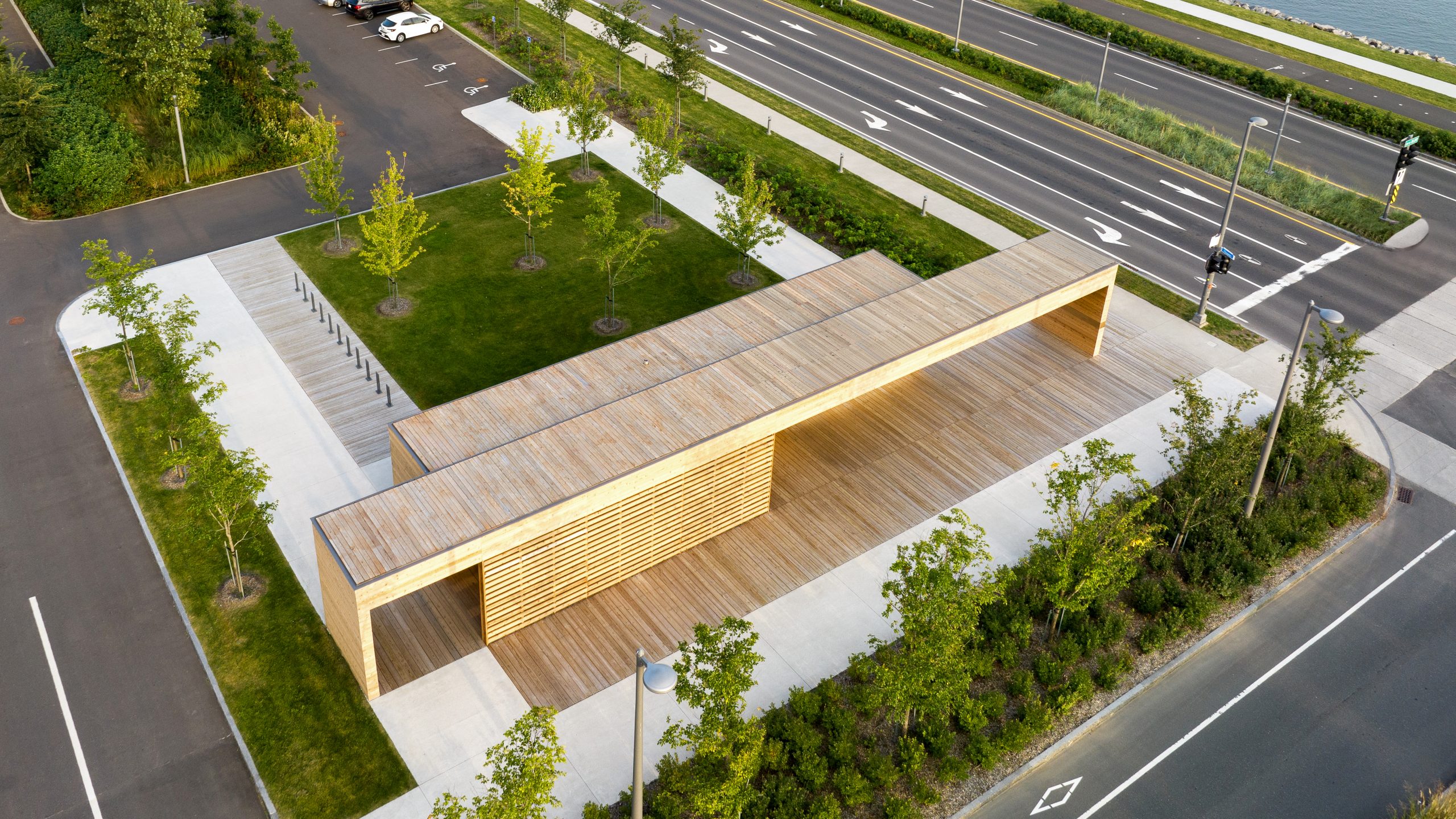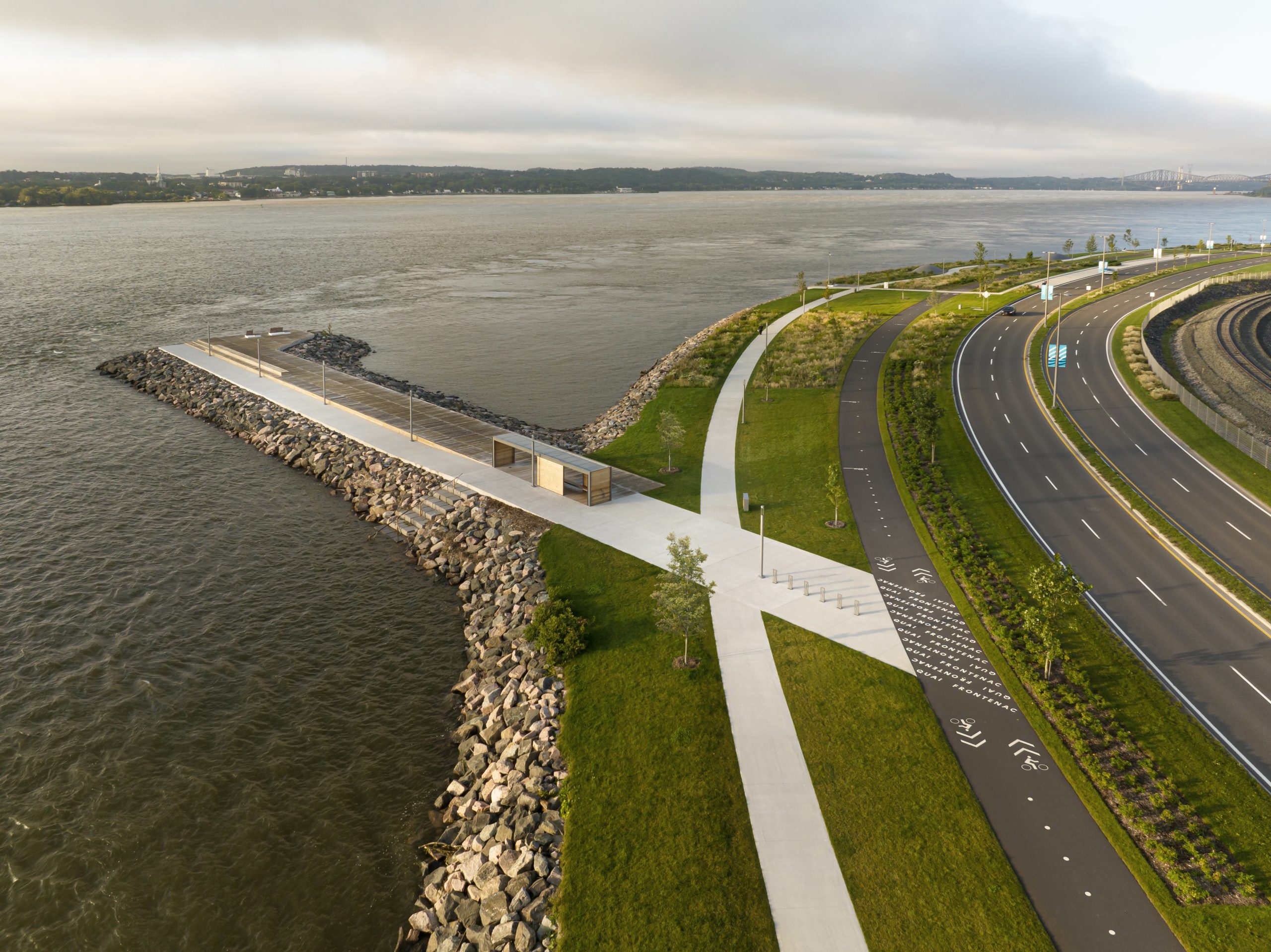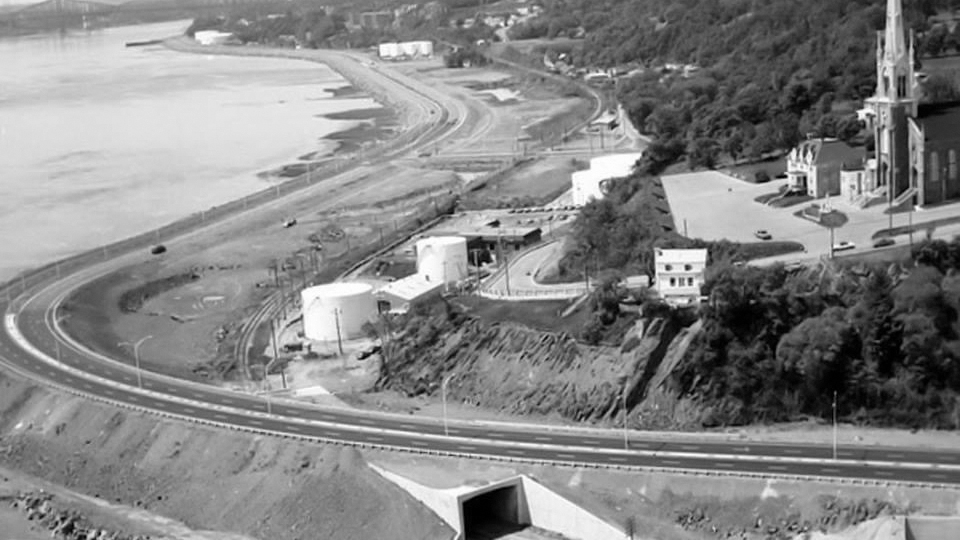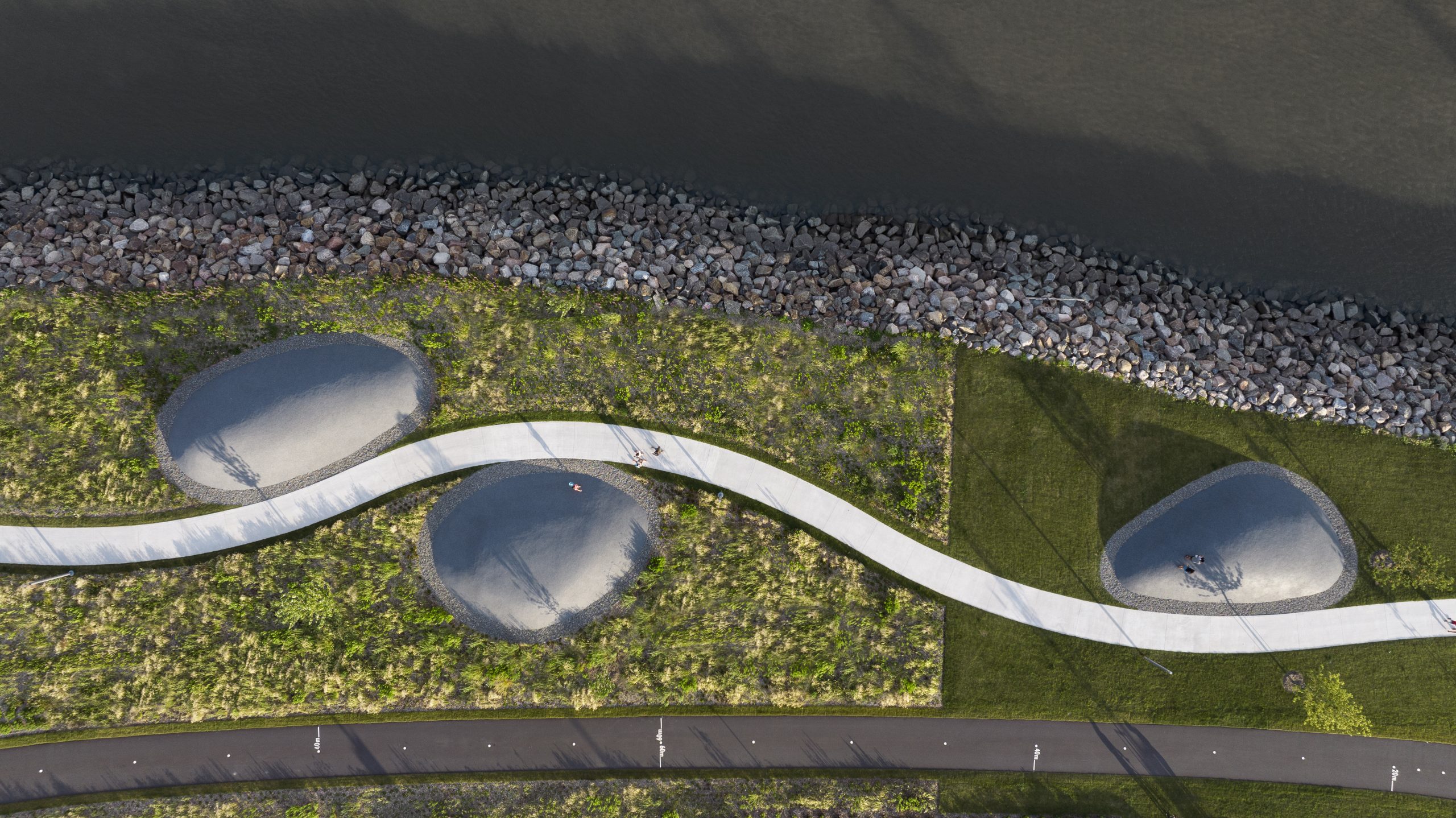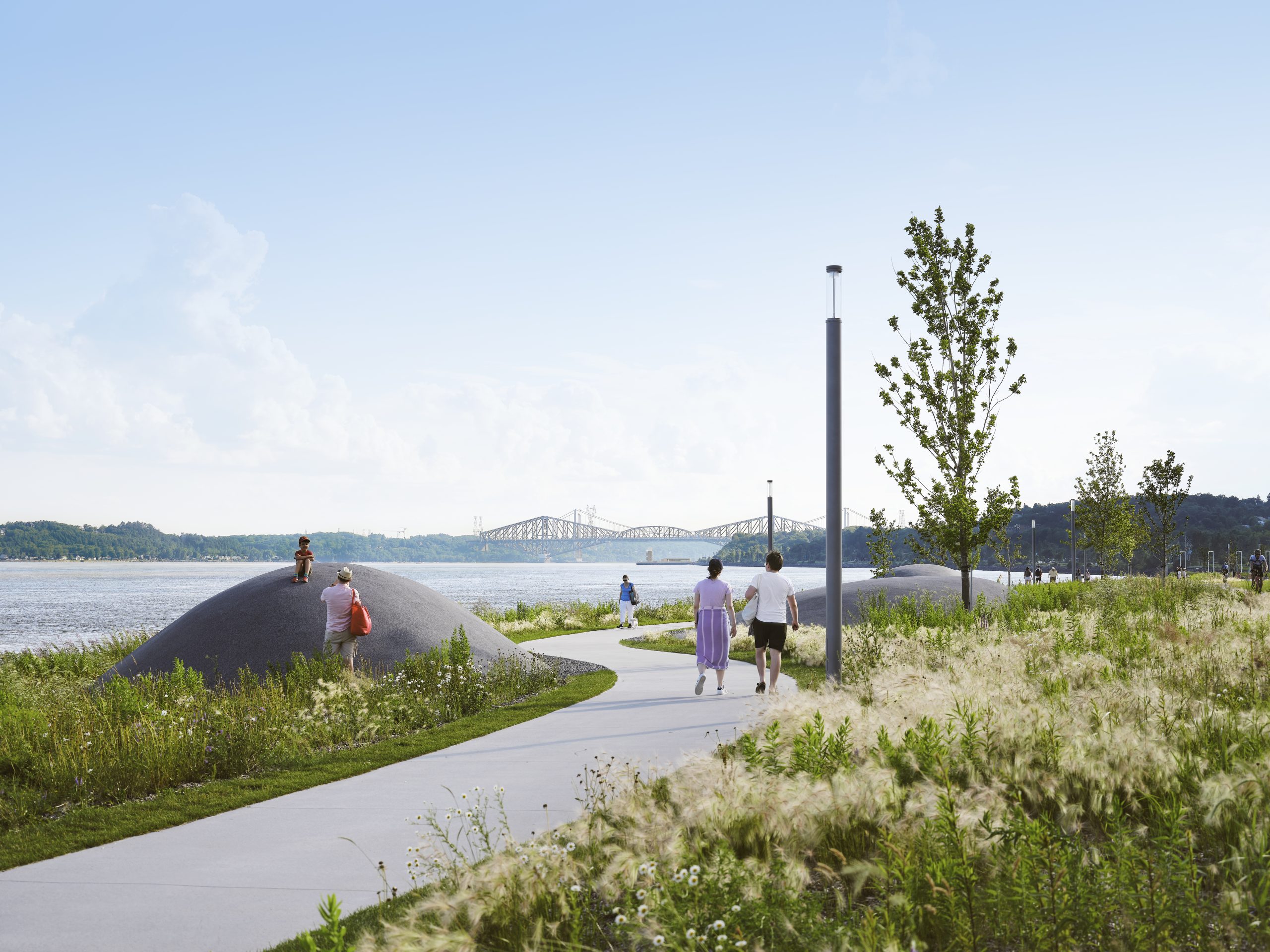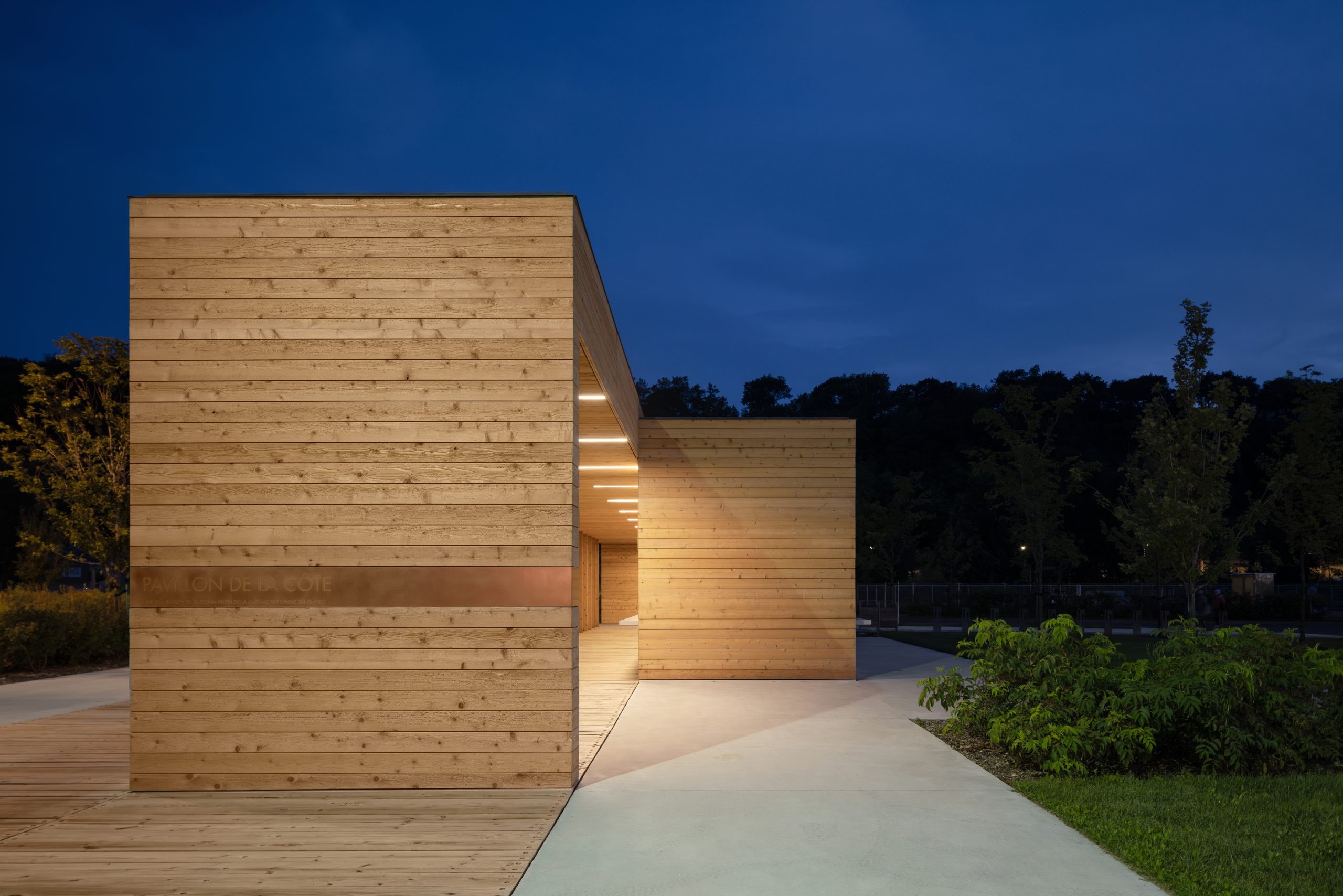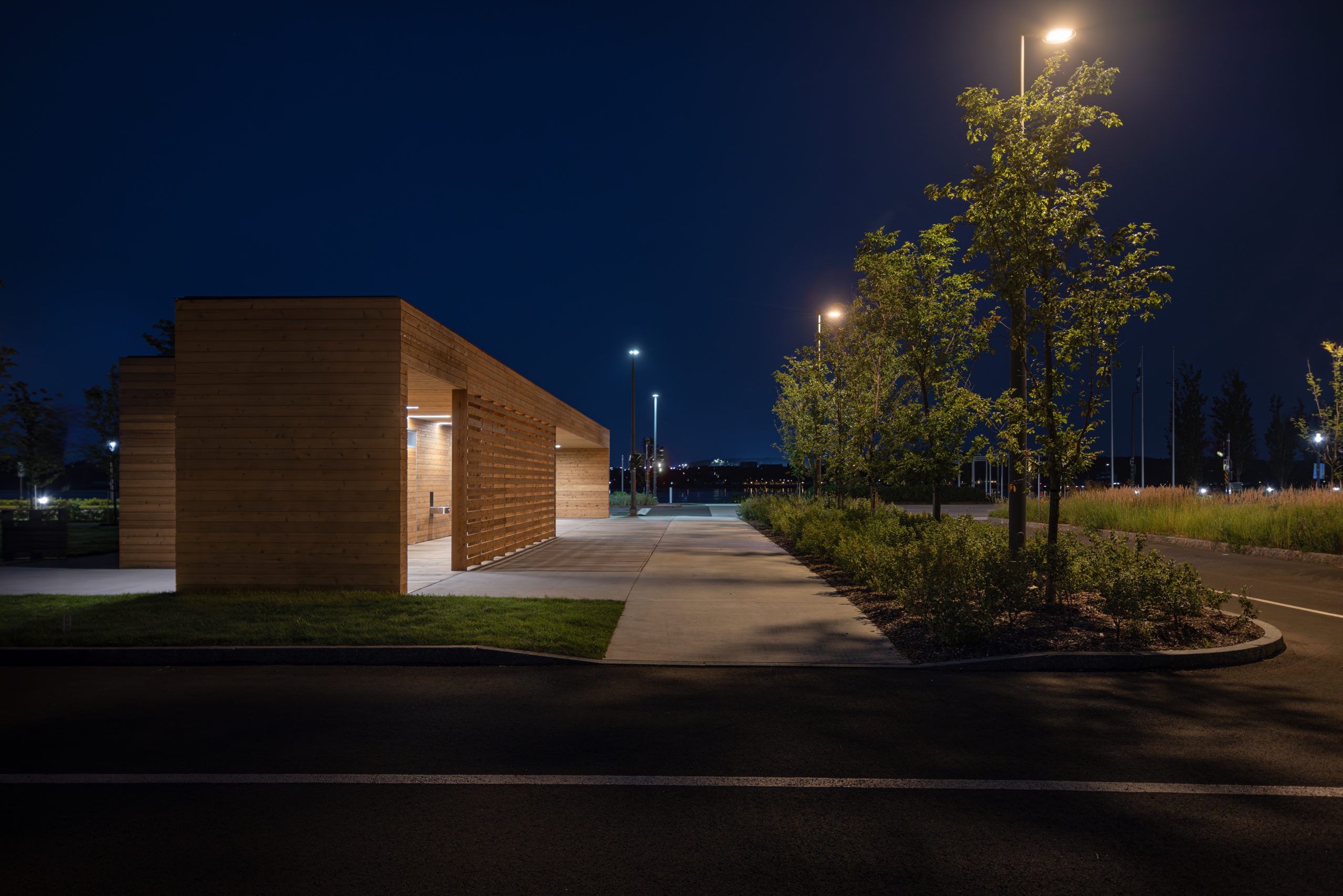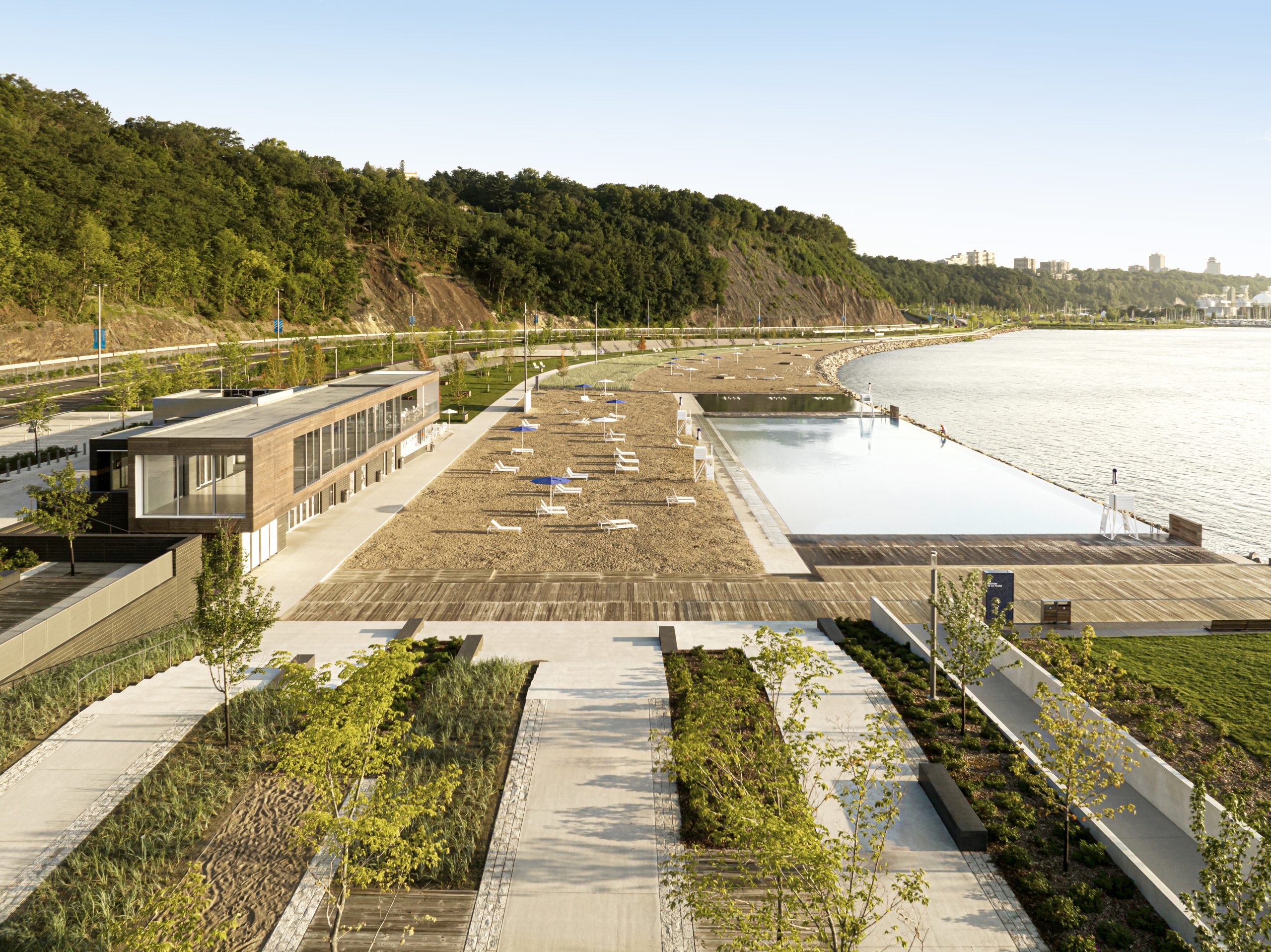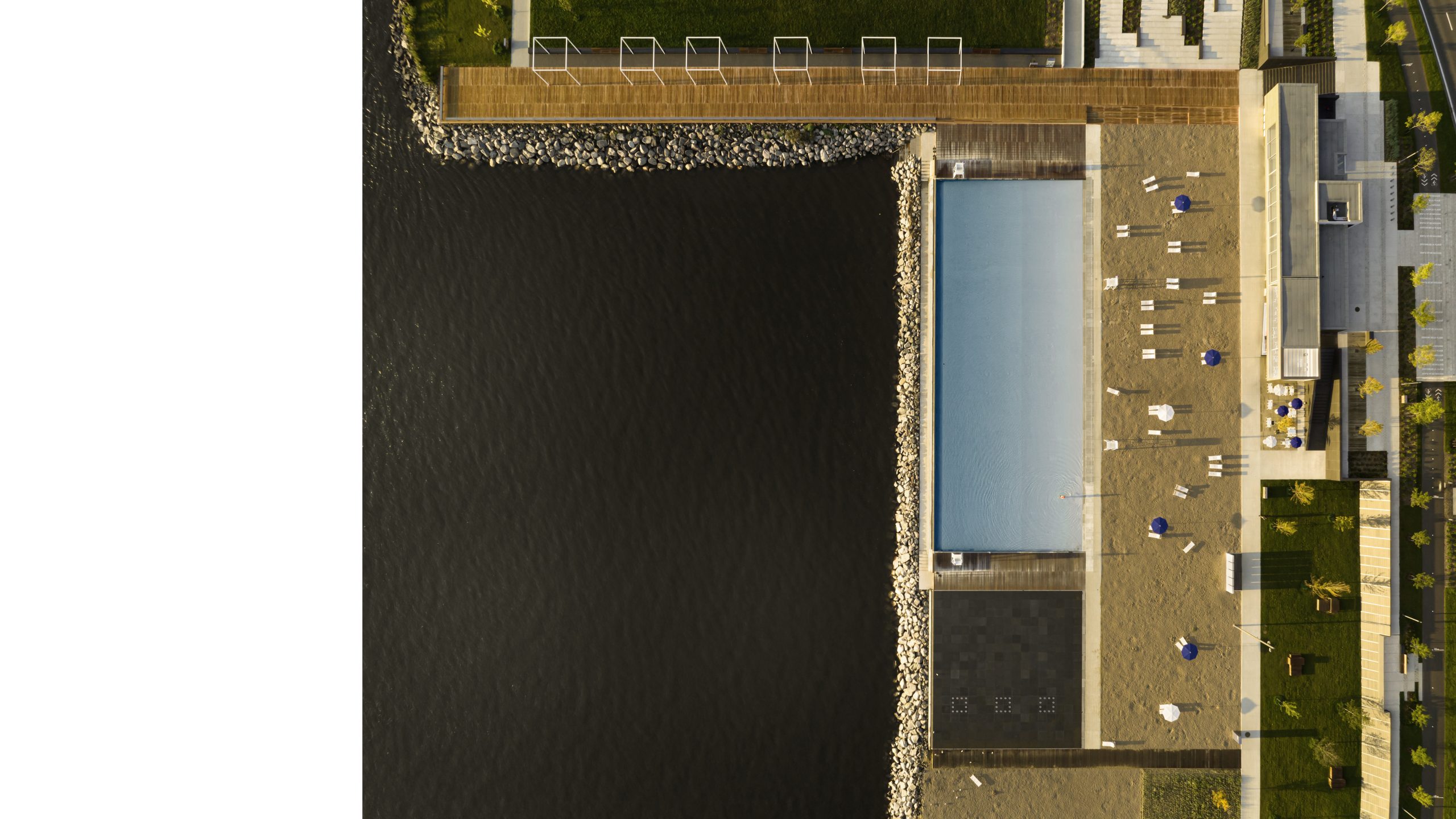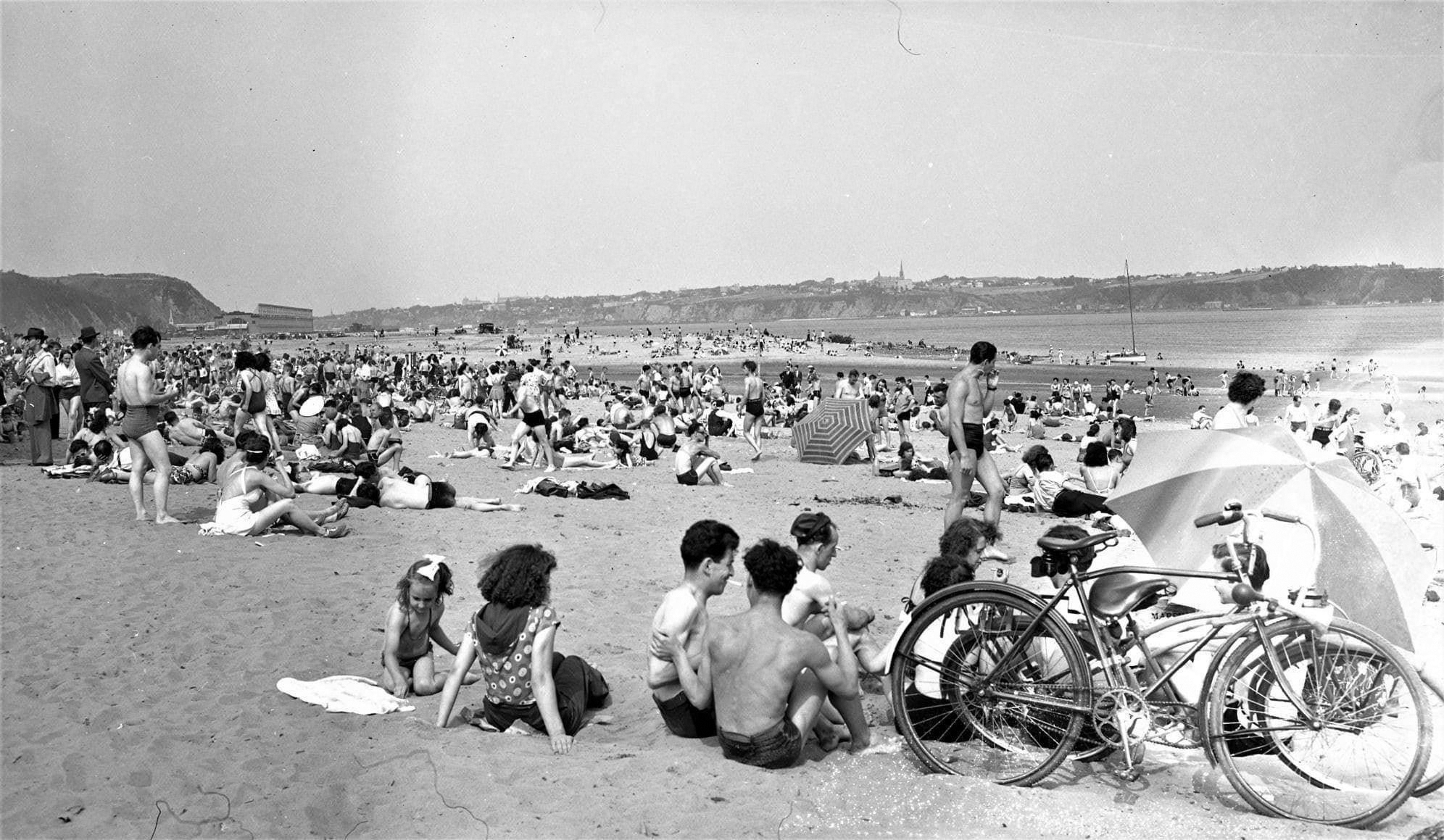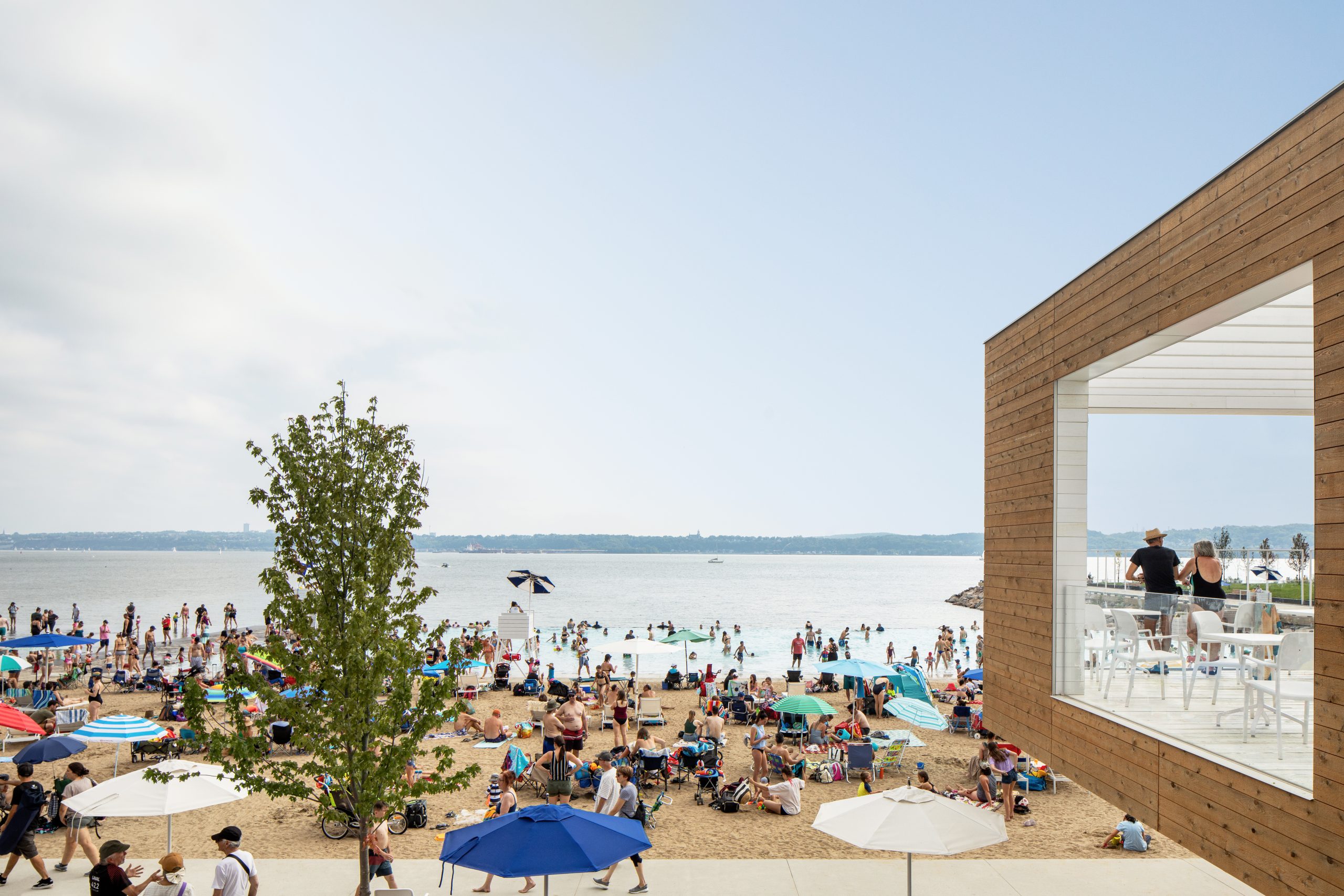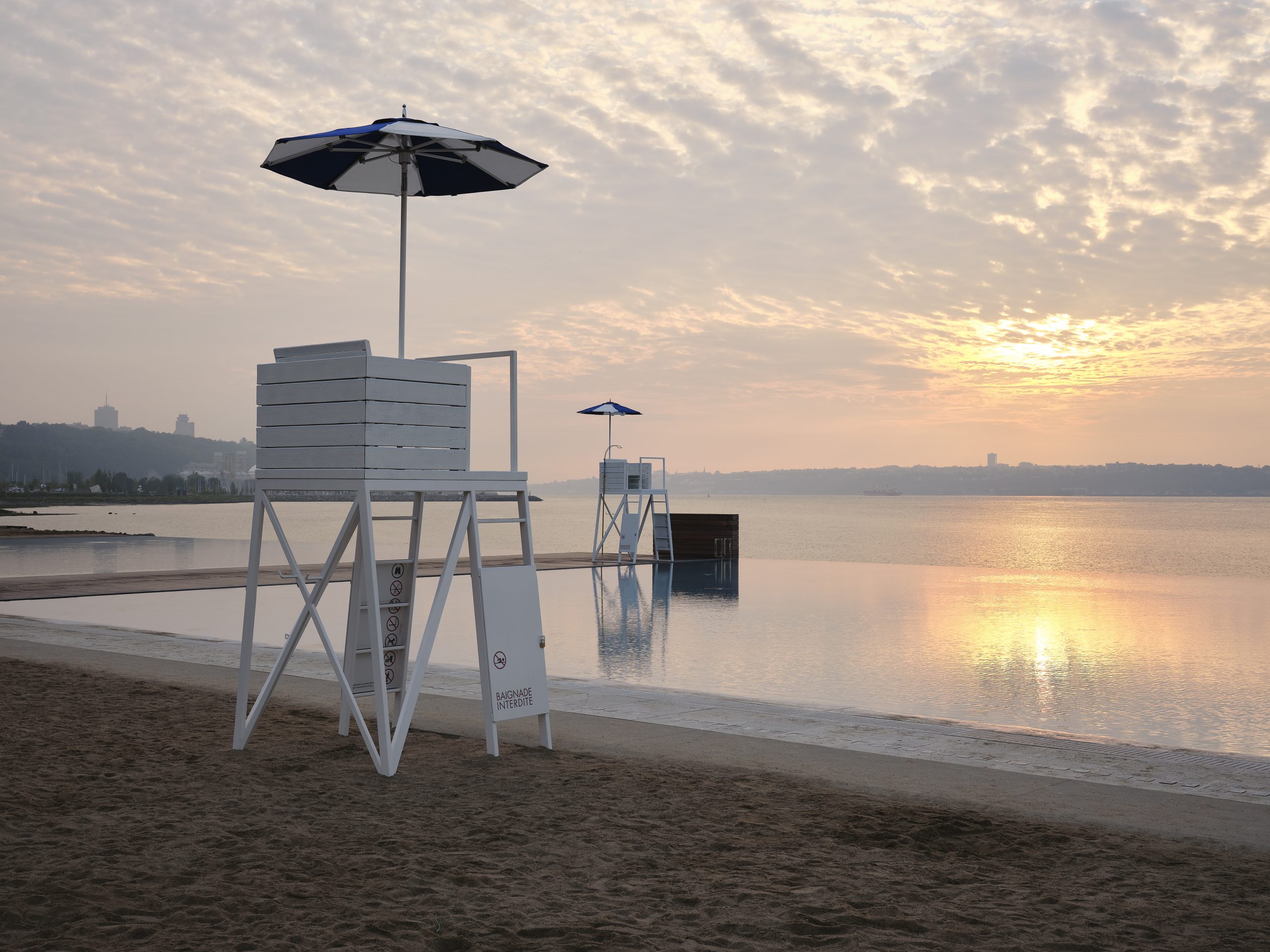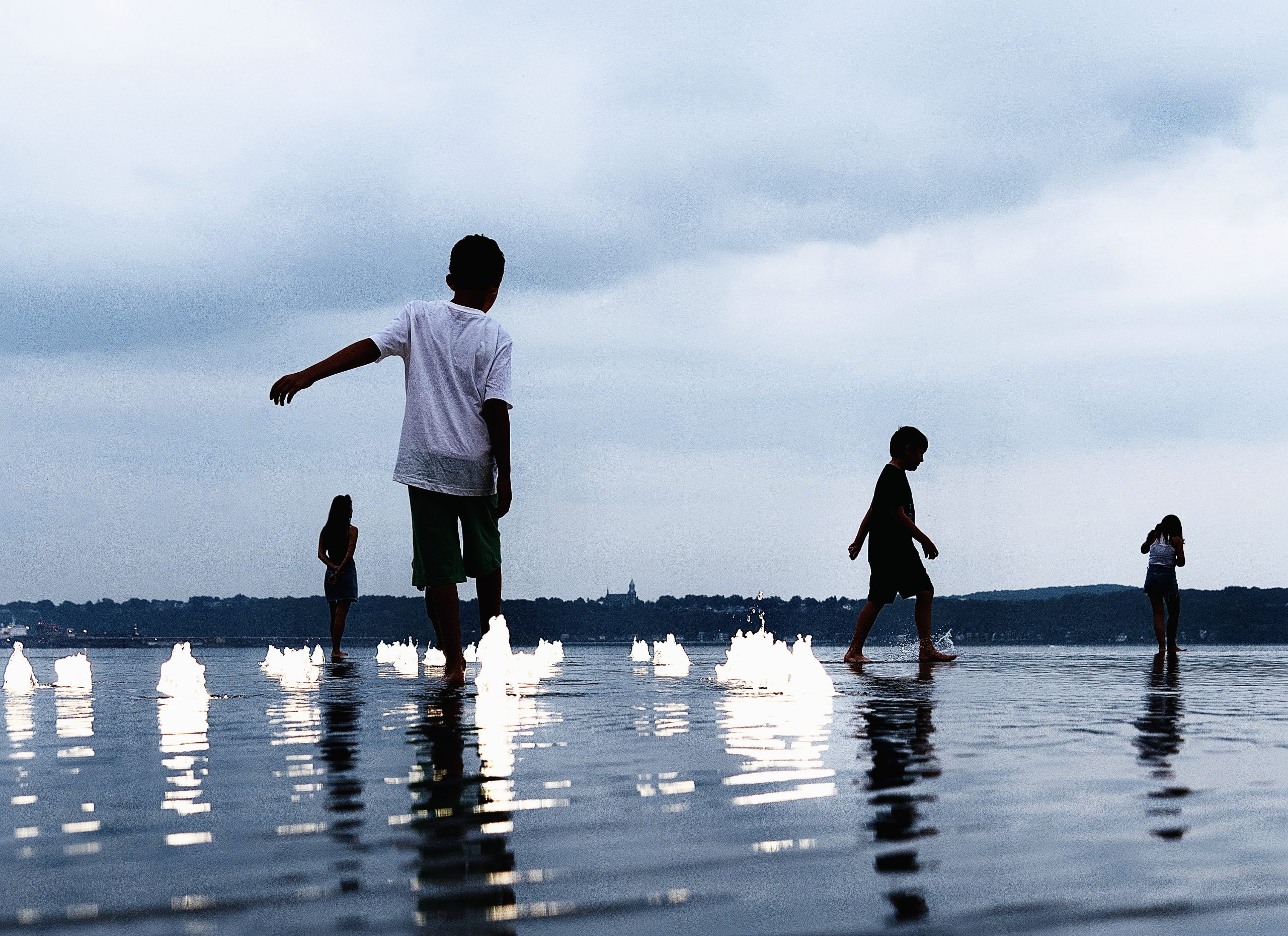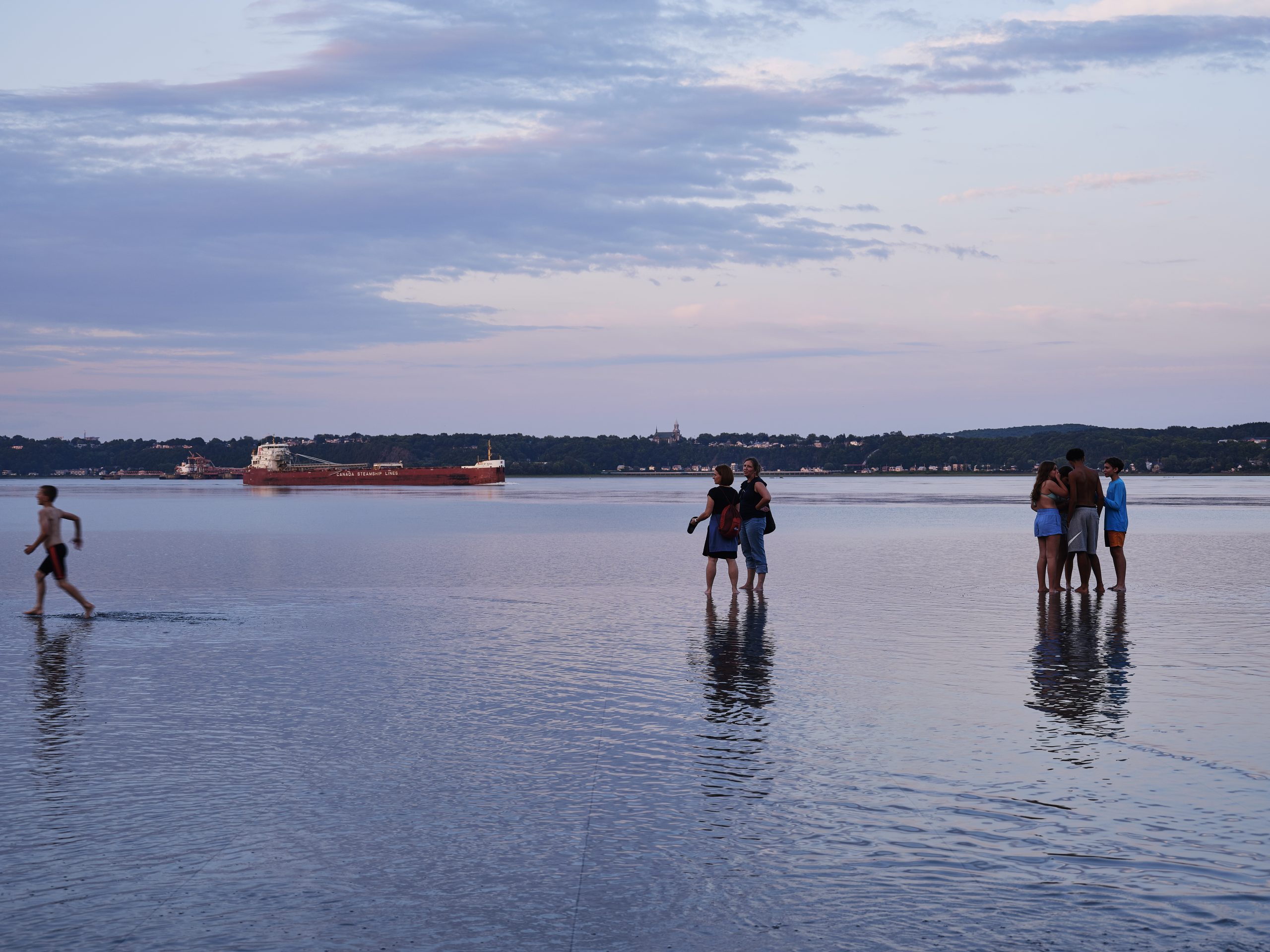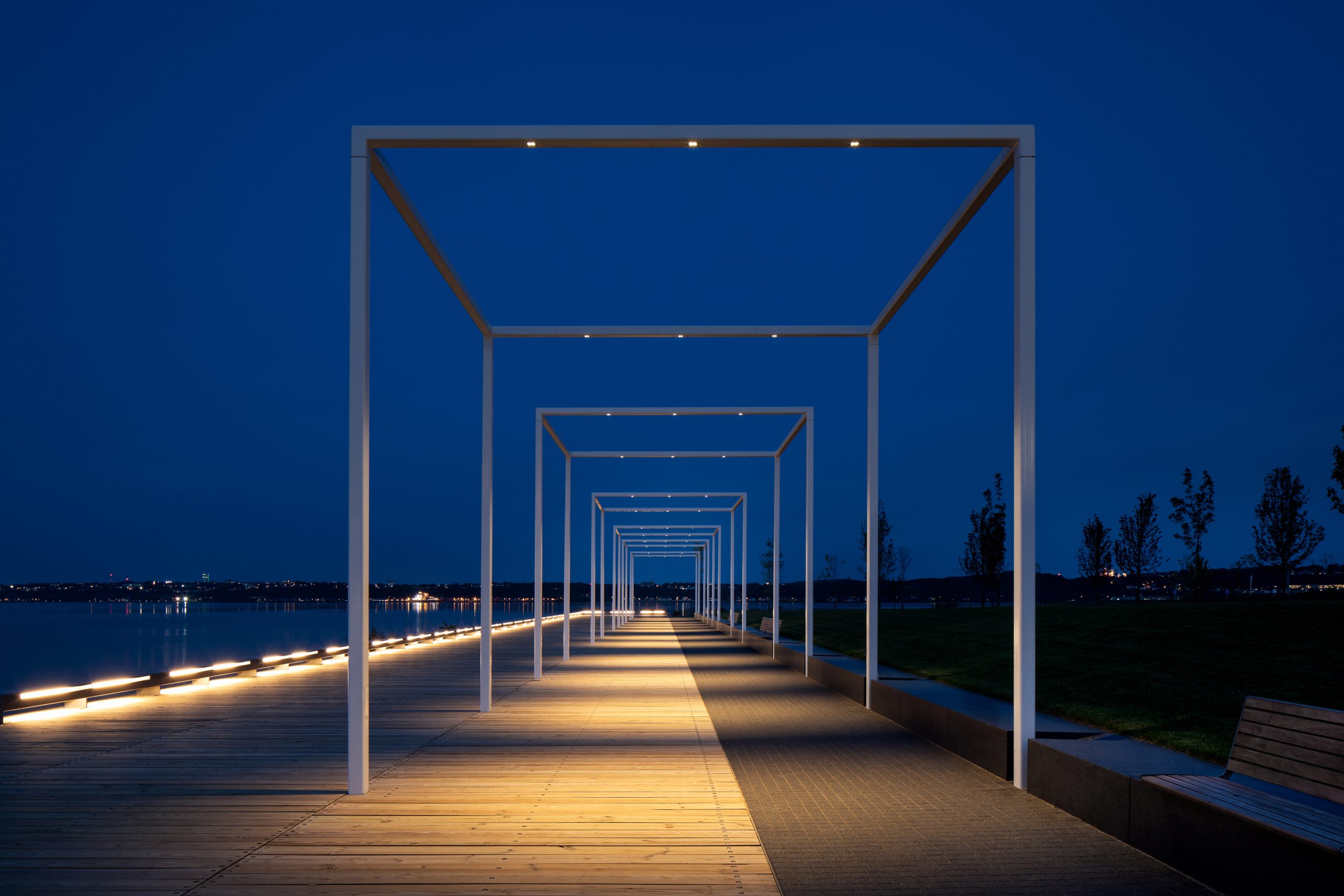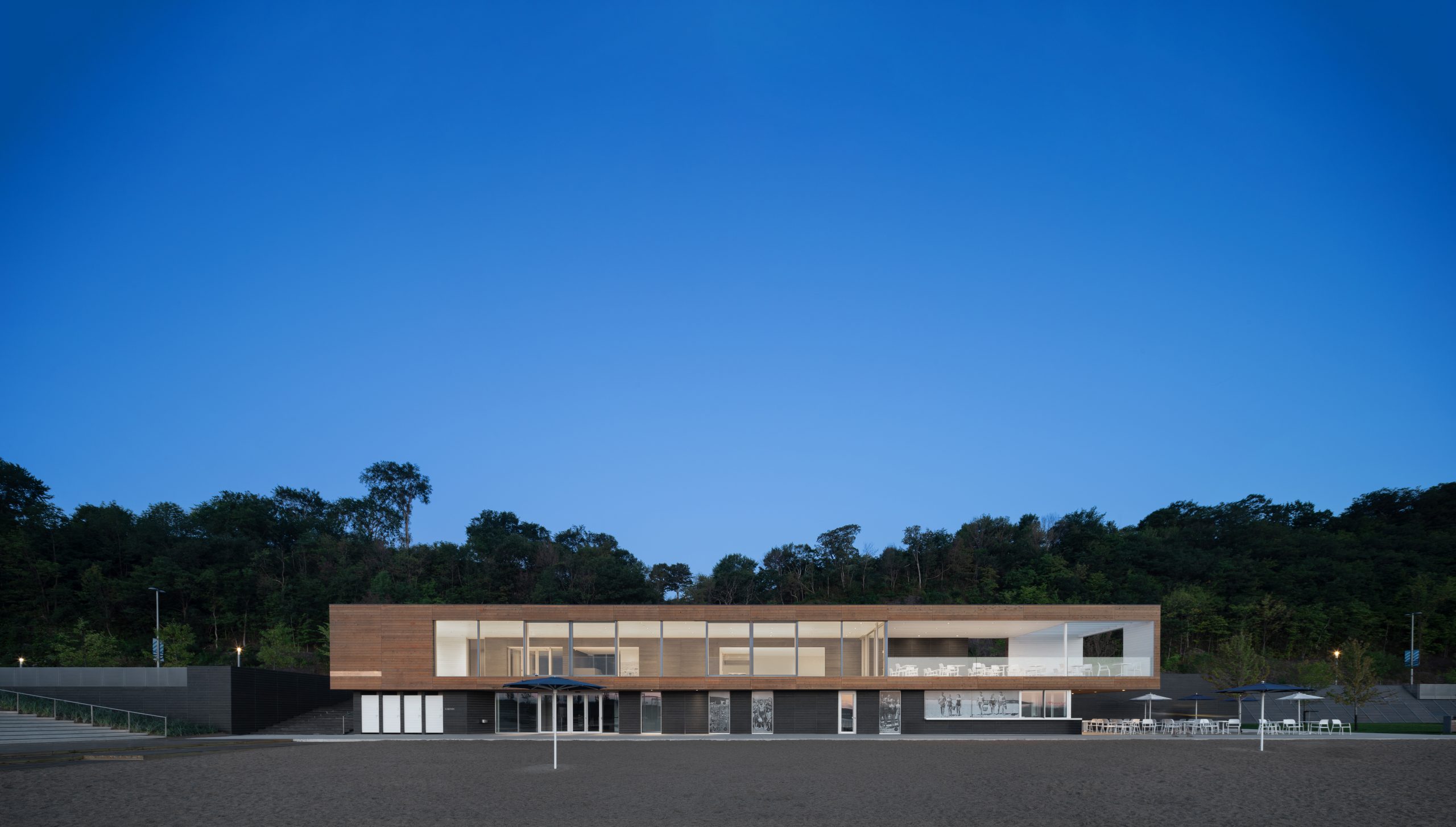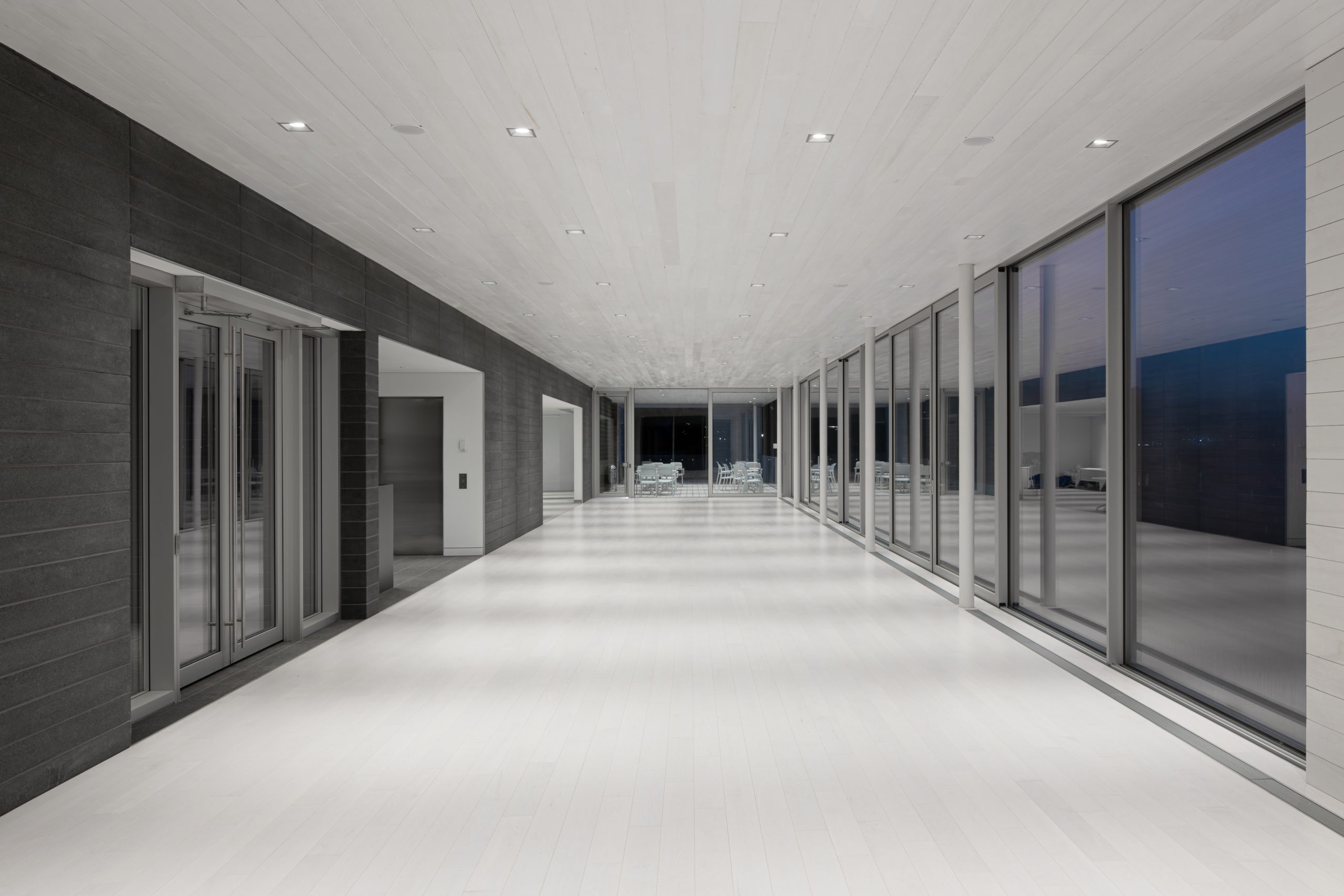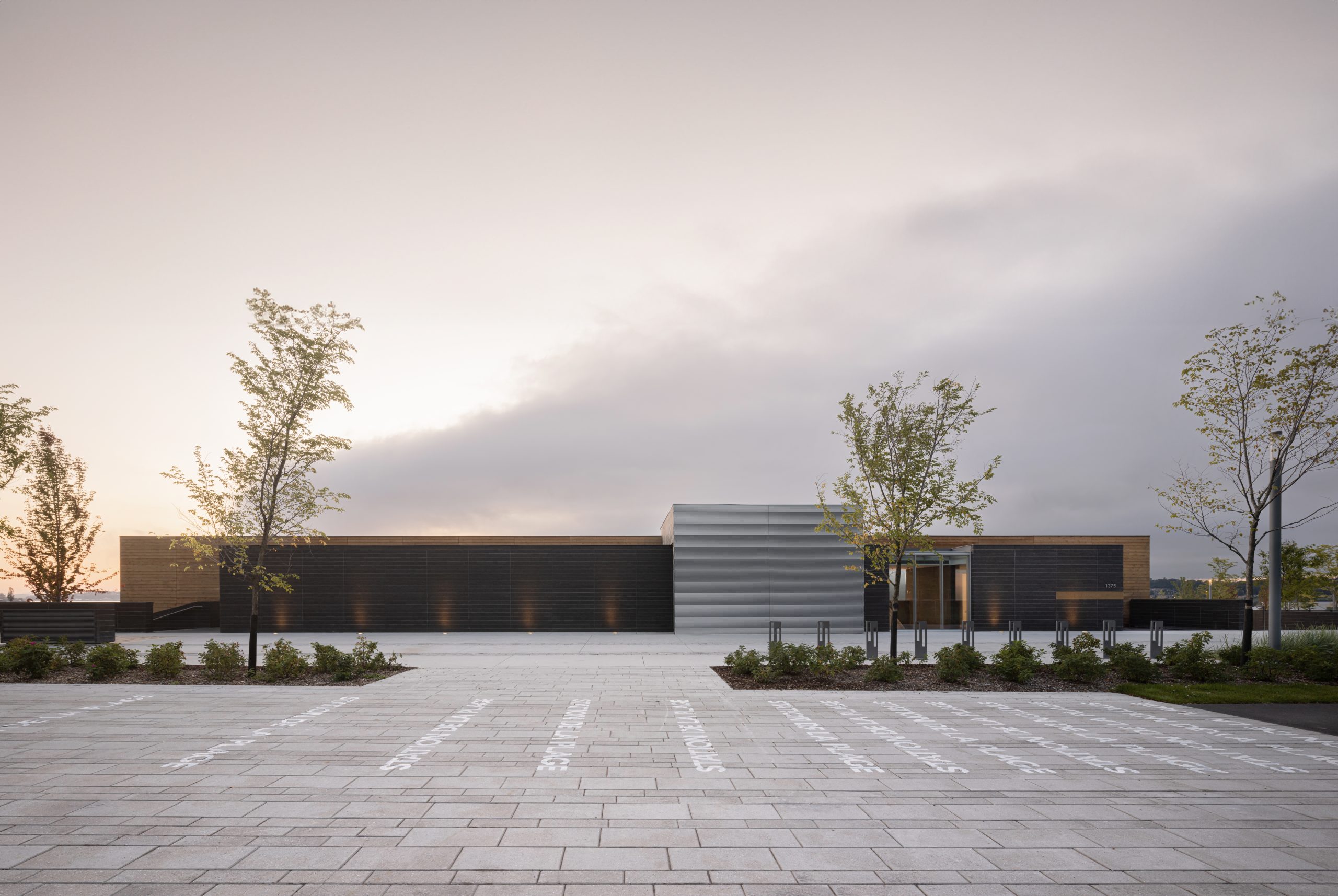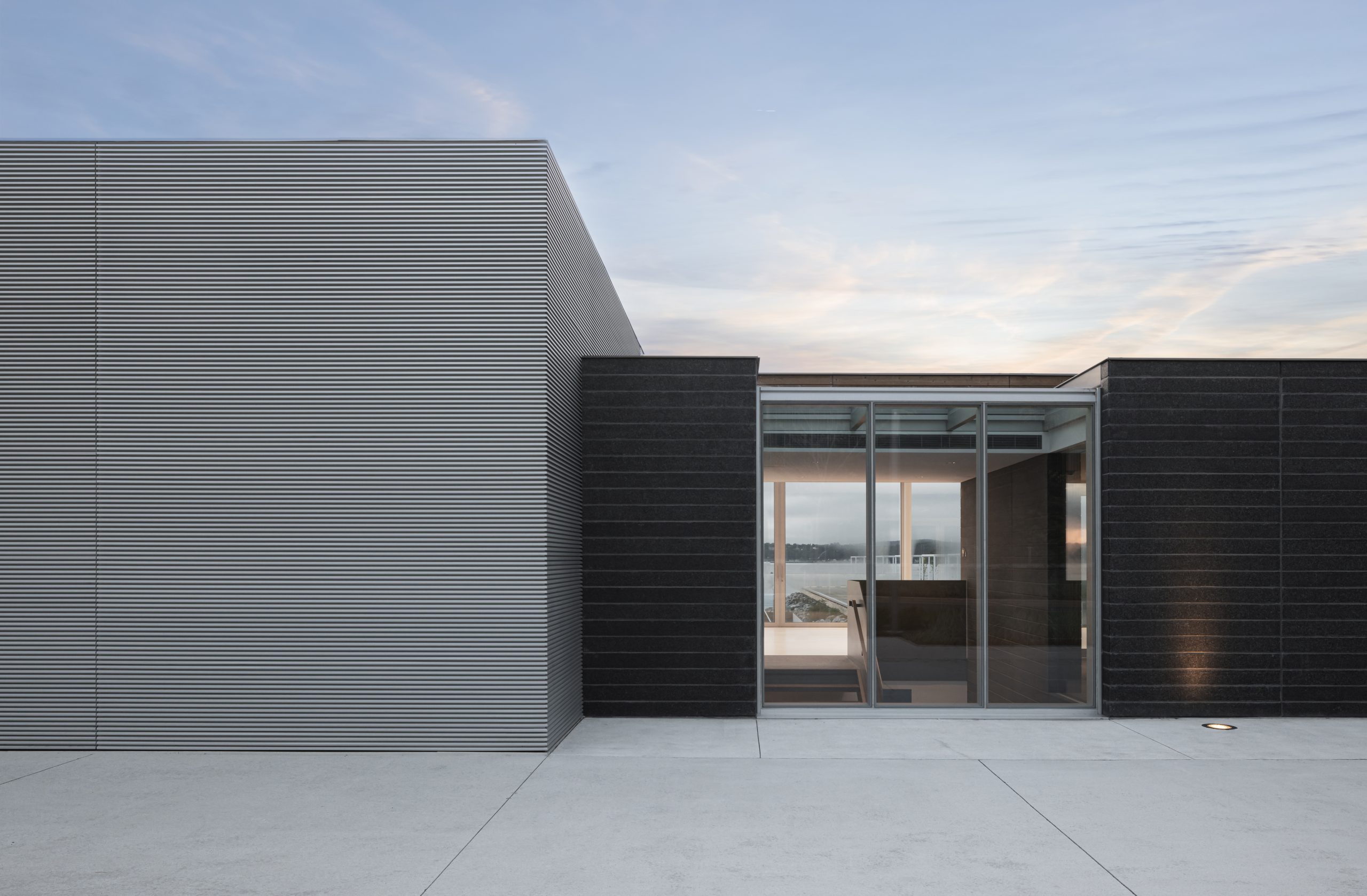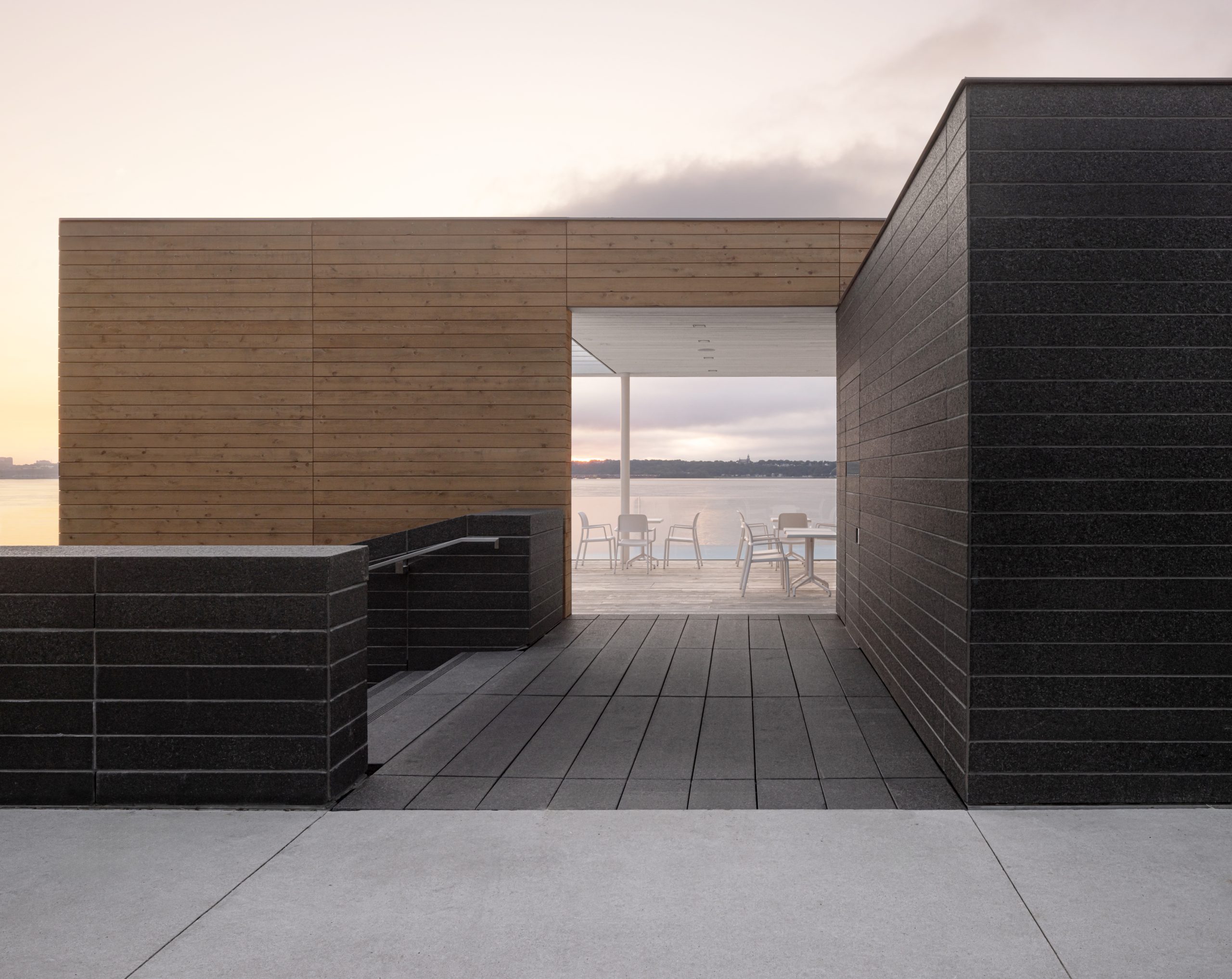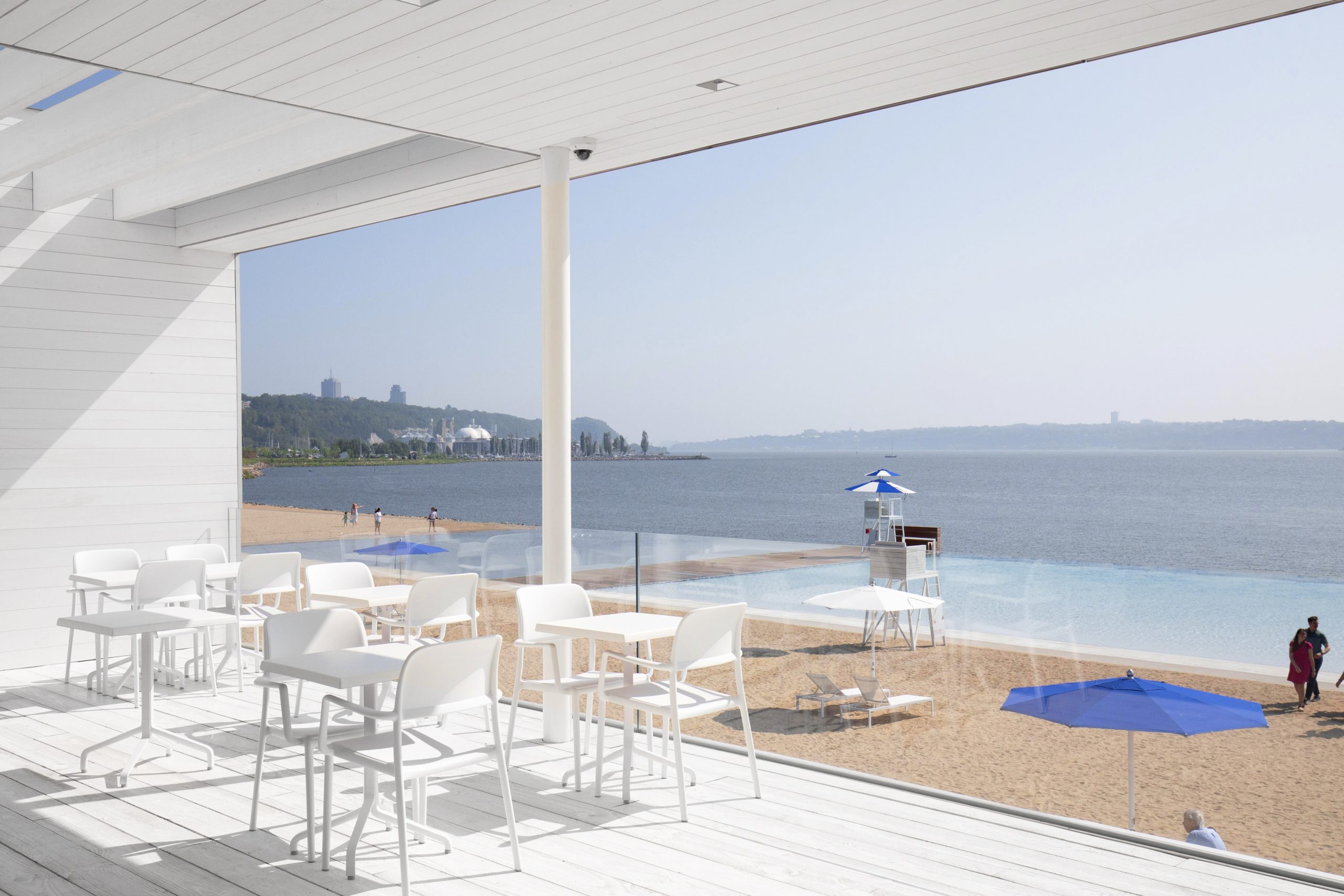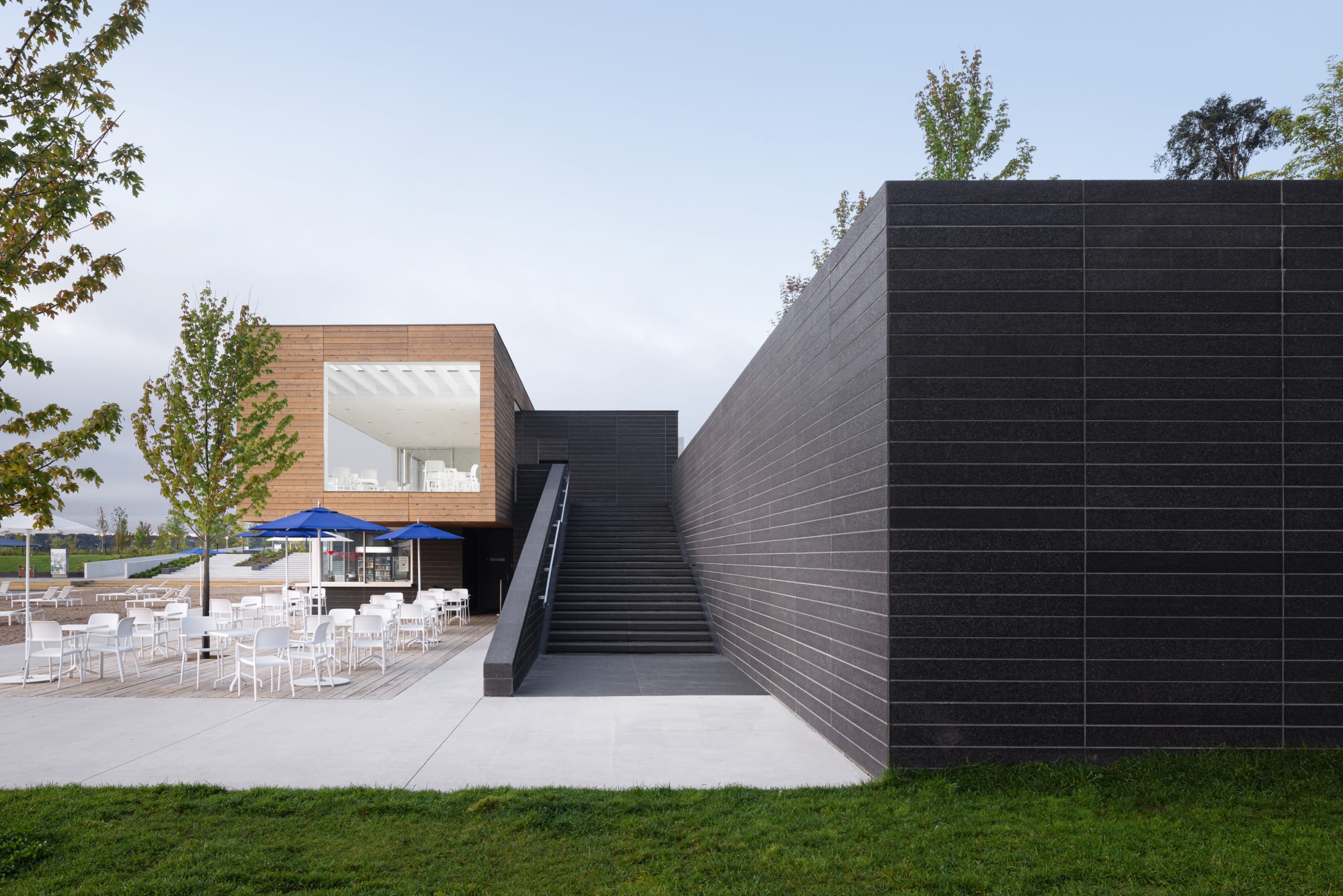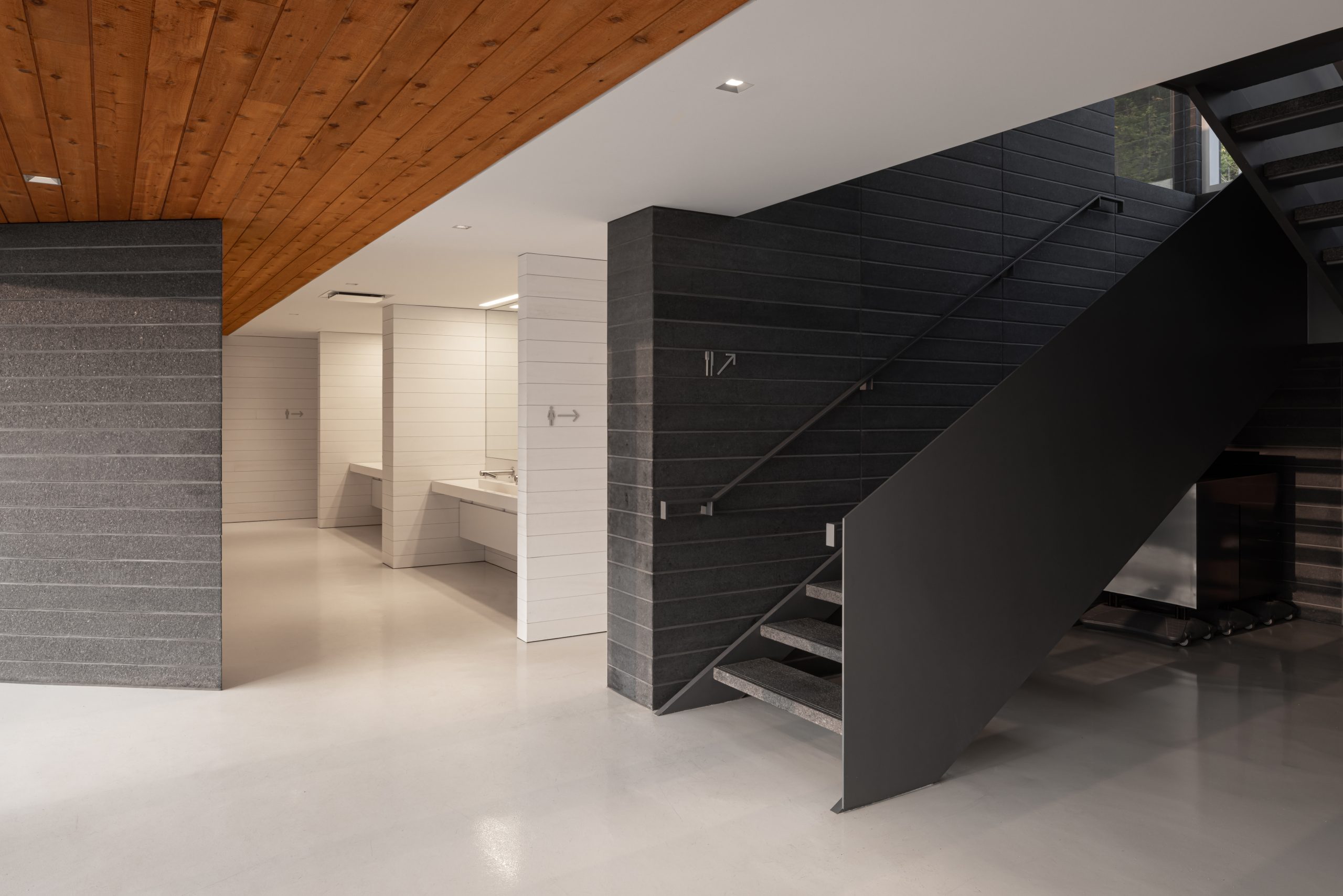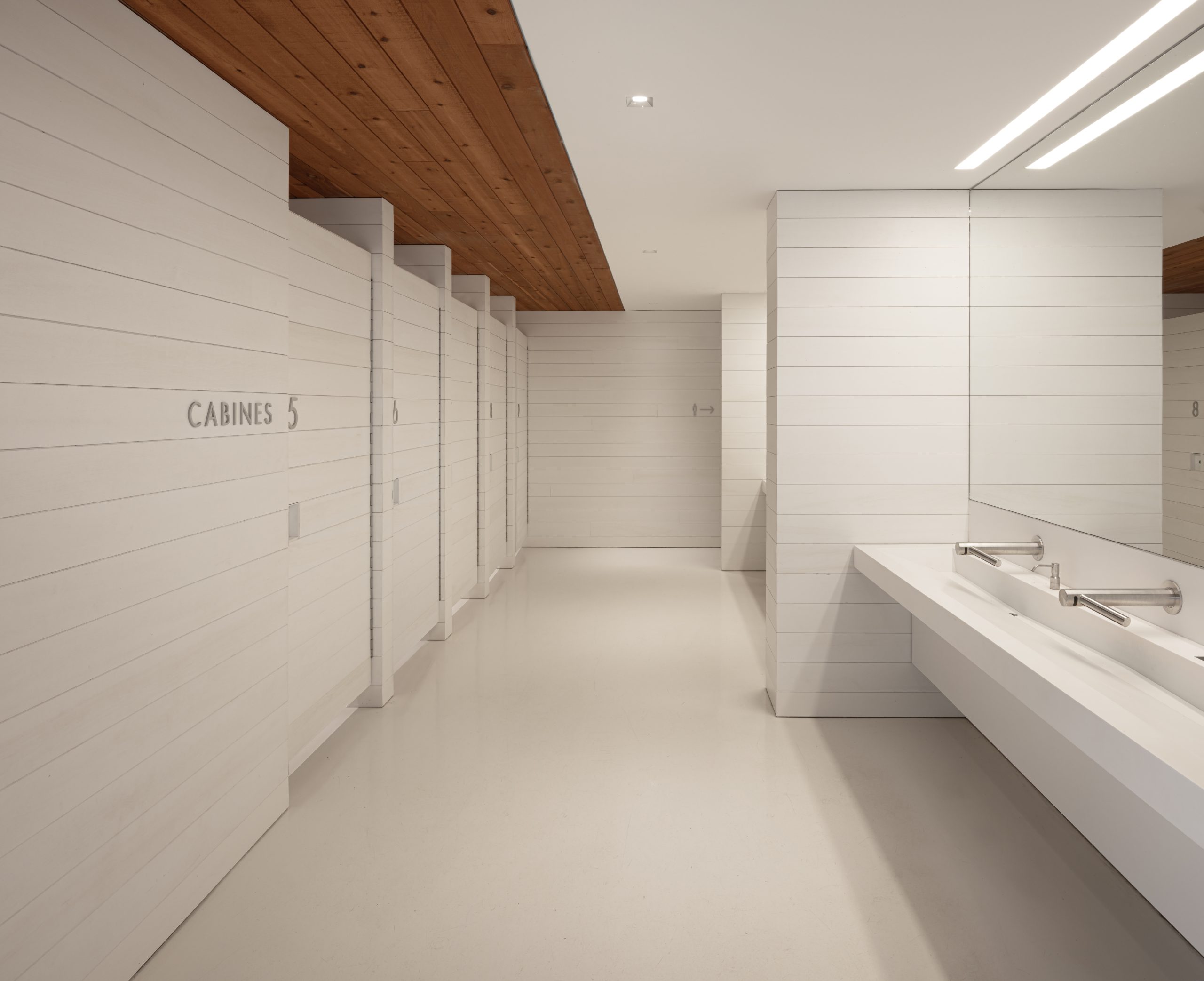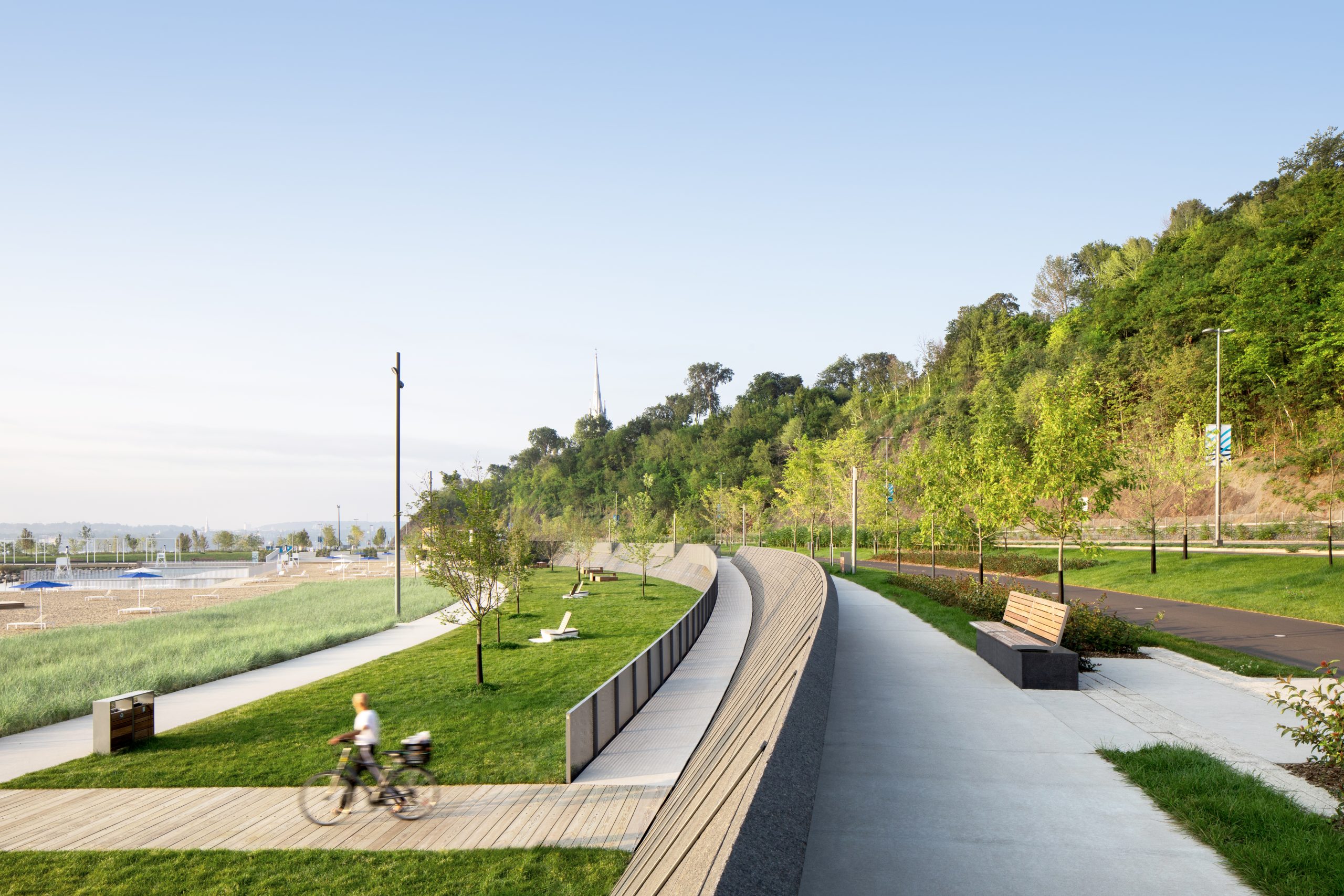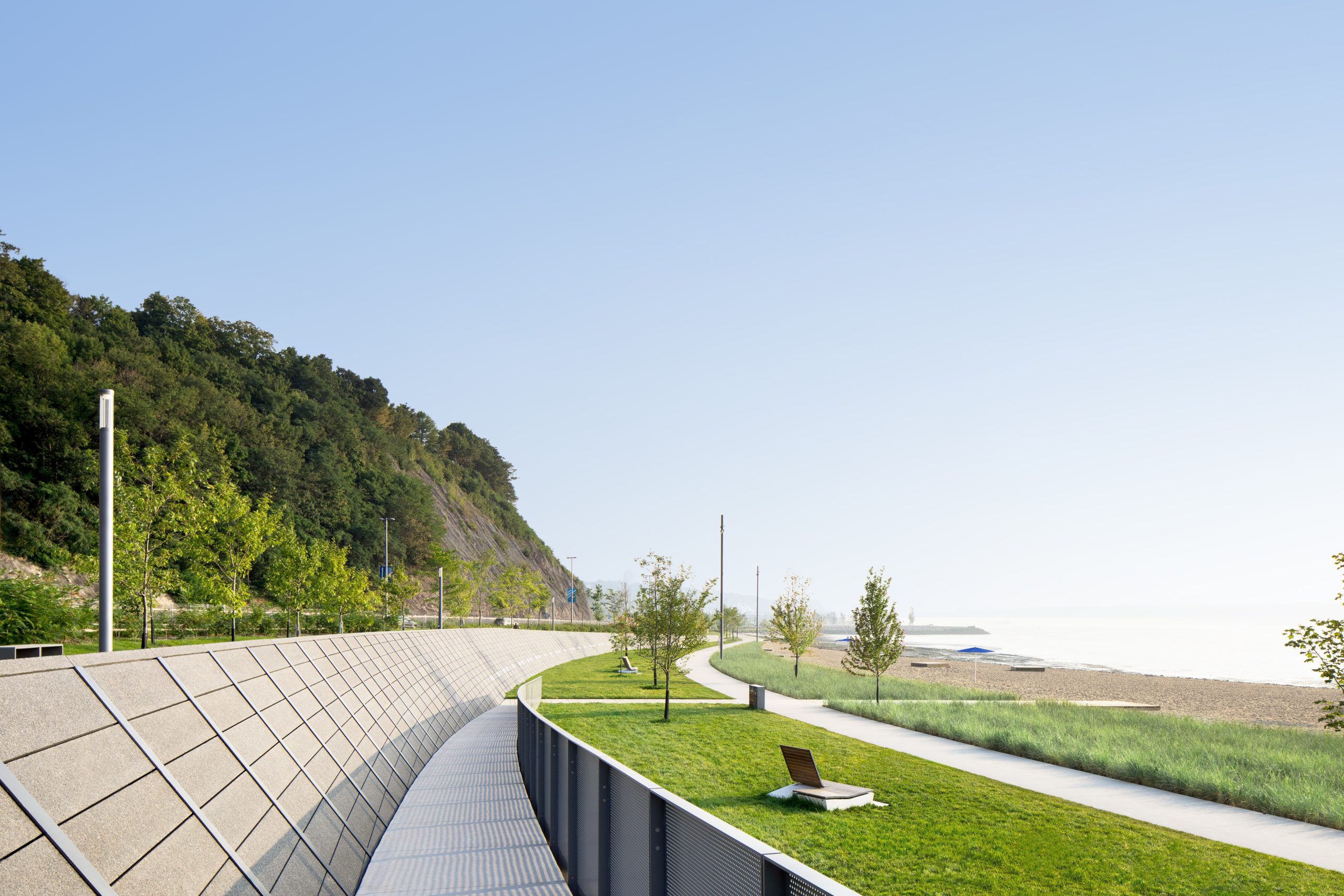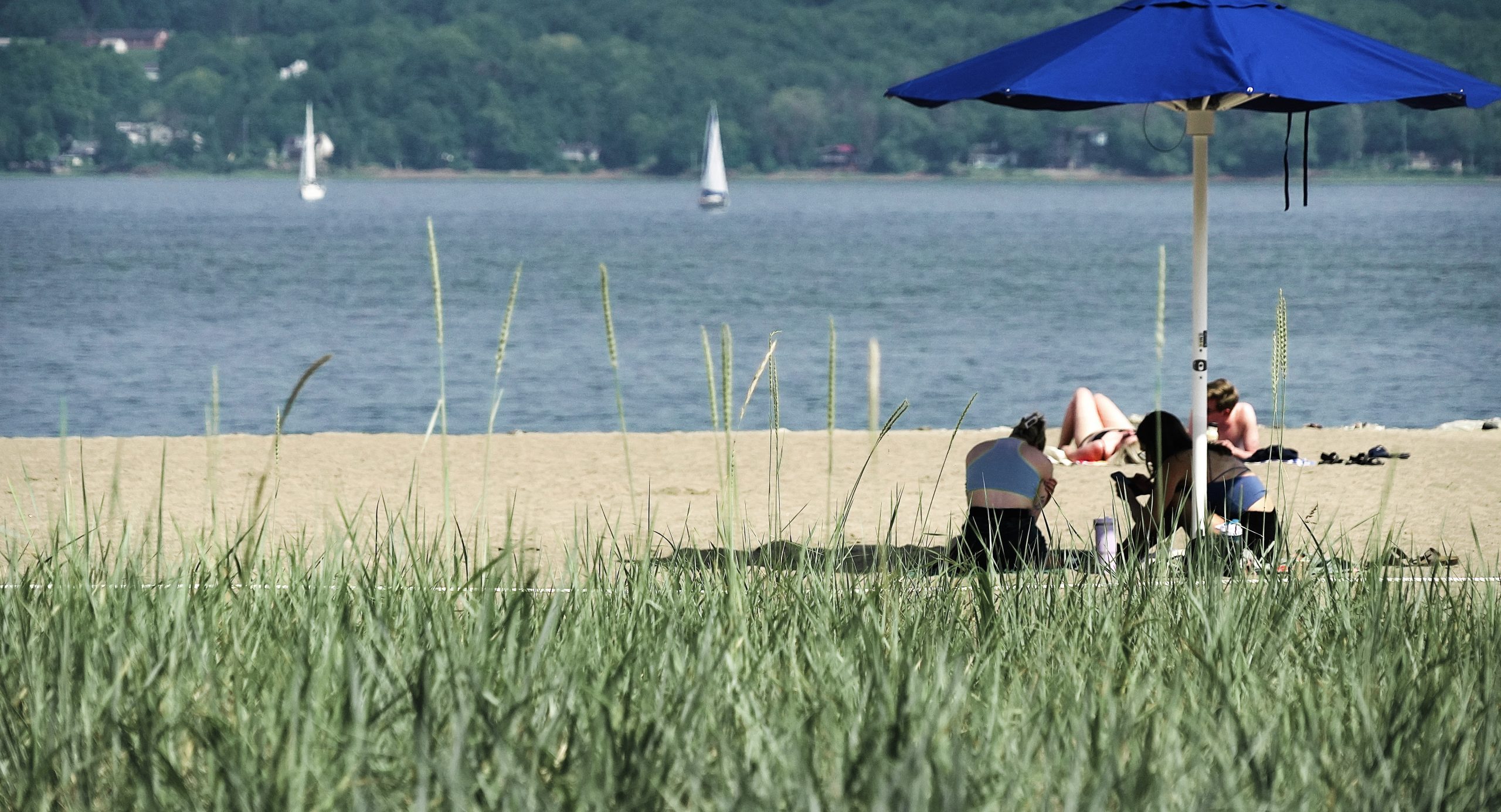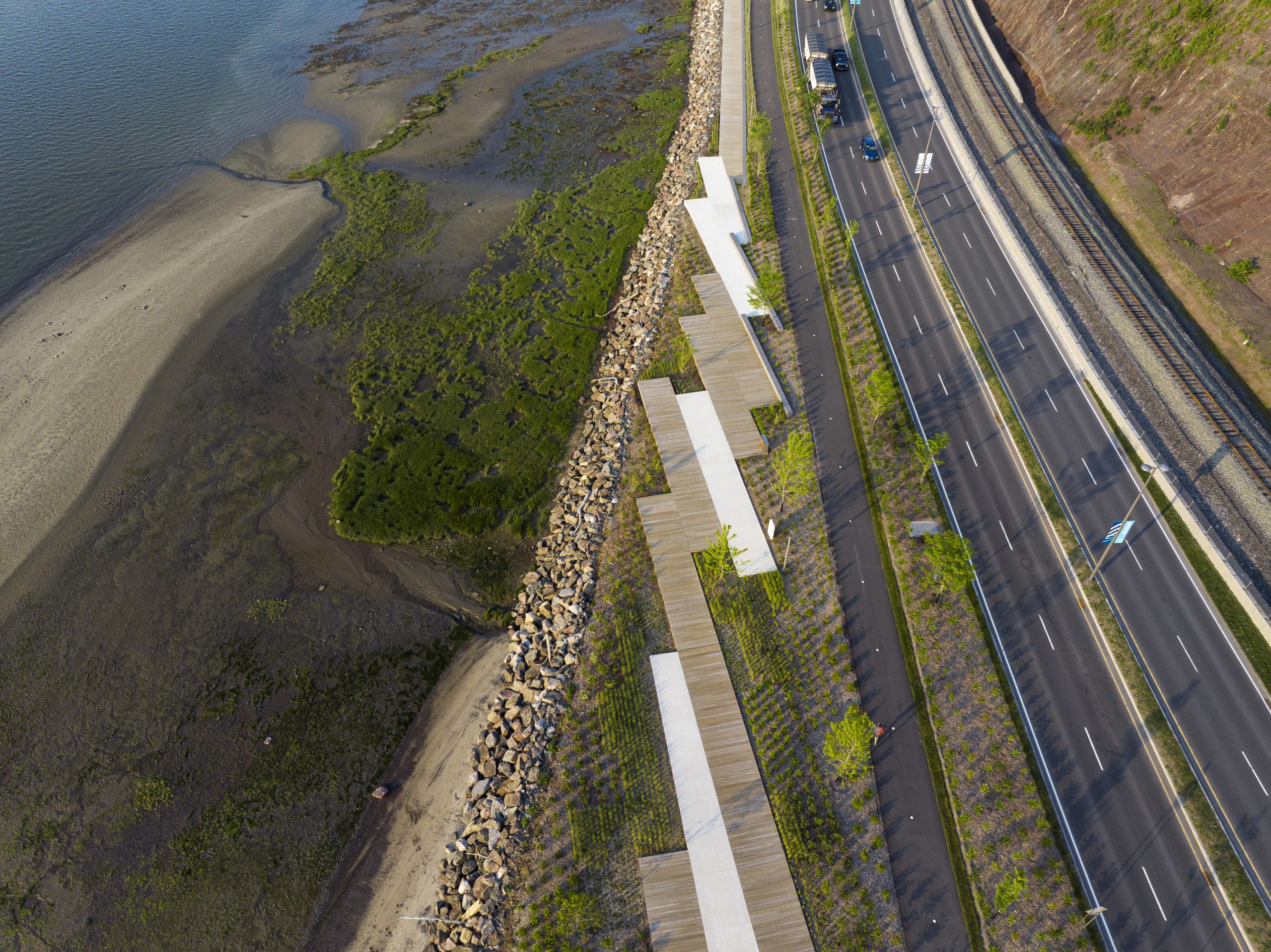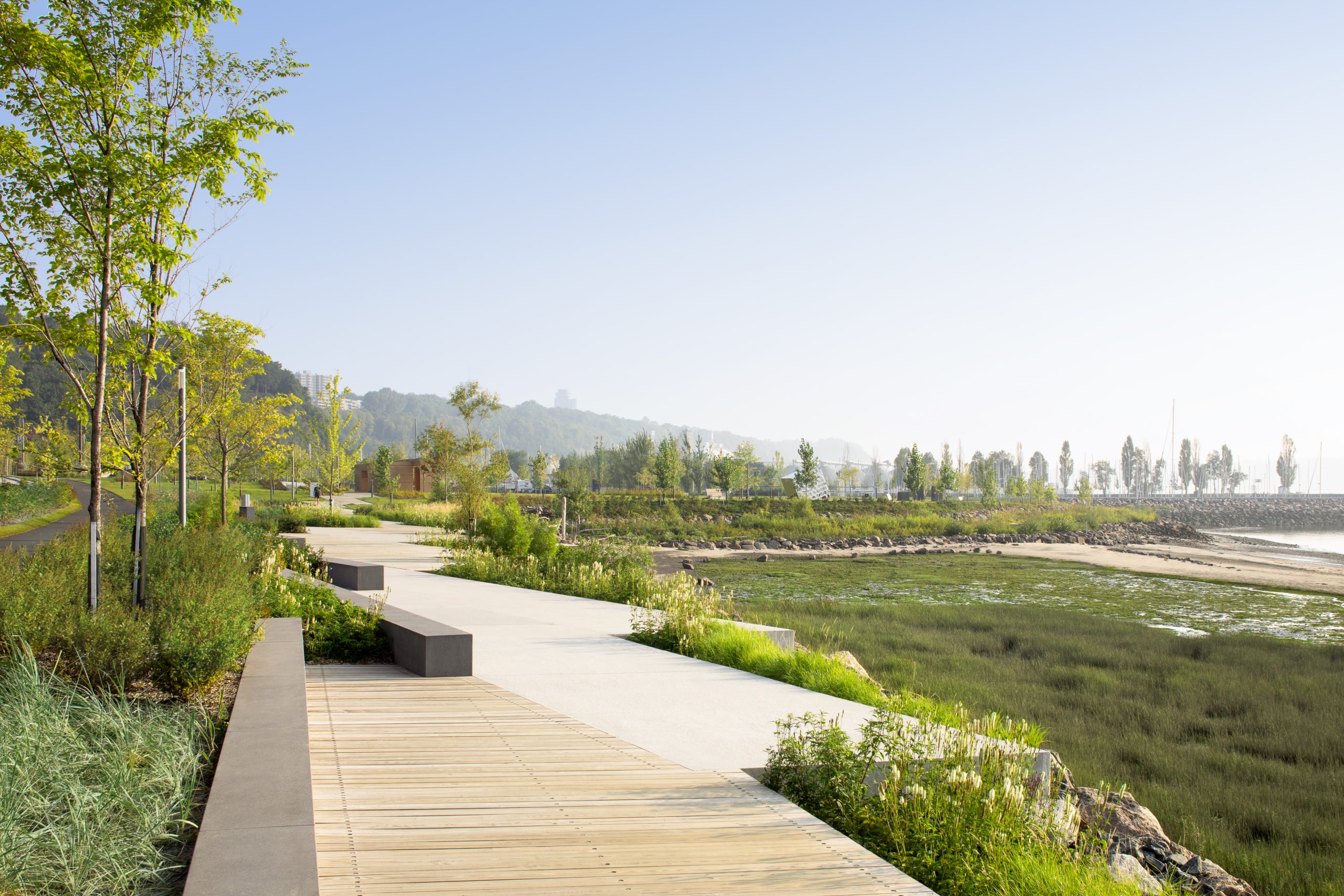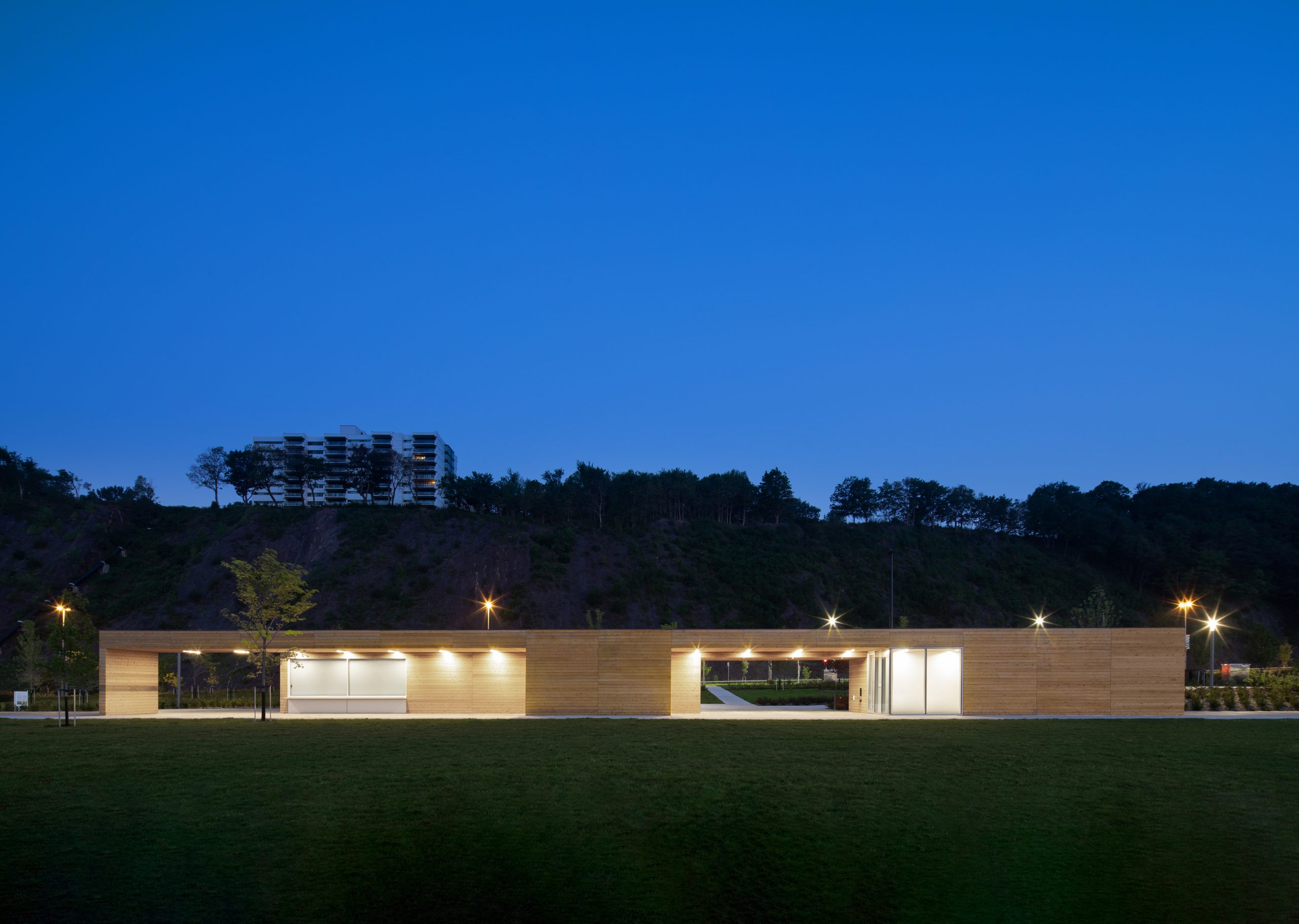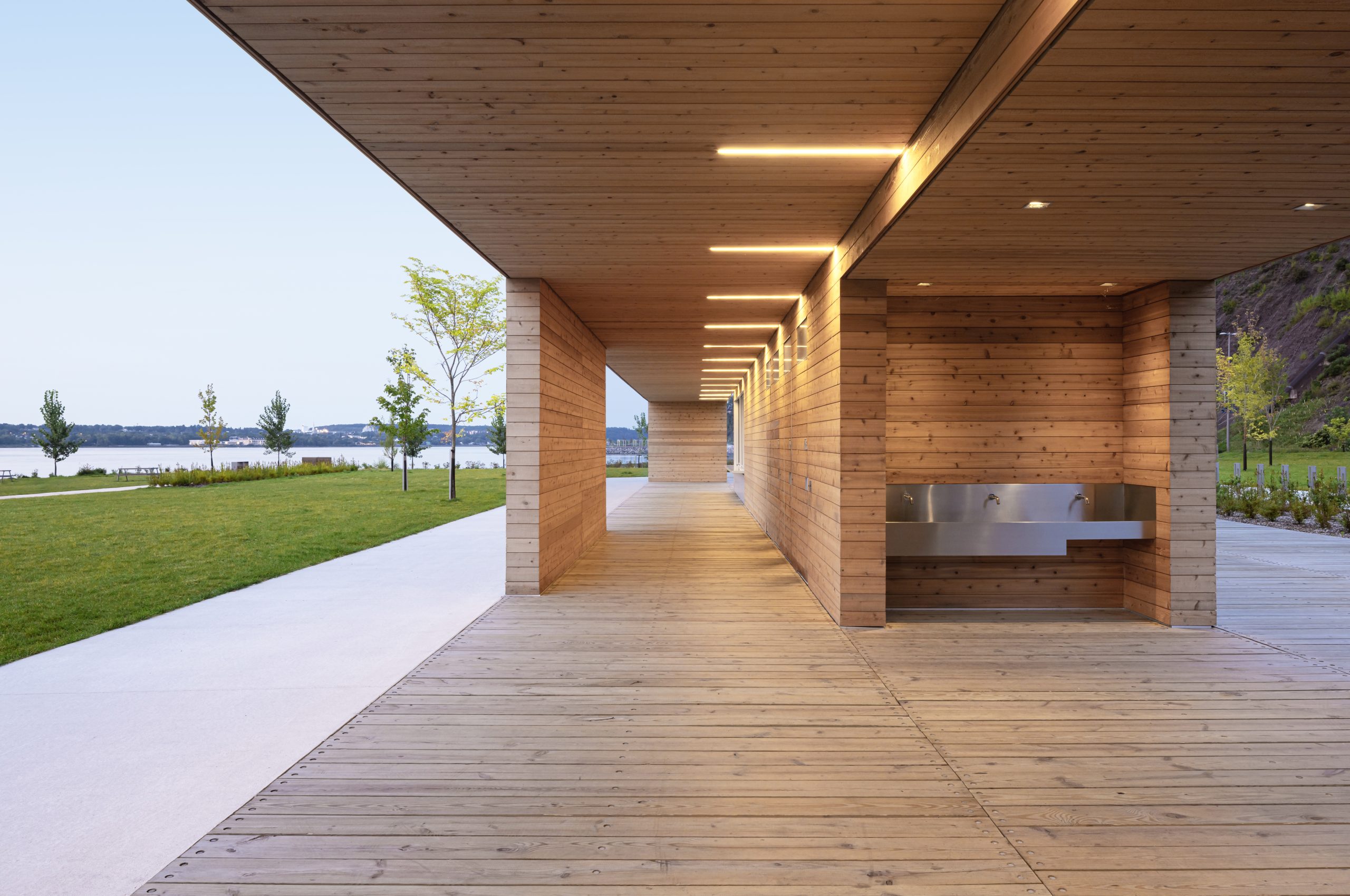Promenade Samuel-De Champlain, Phase 3
2023
The recently concluded third phase of the Promenade Samuel-de Champlain, completed fifteen years after the inaugural phase, offers a continuation of the design language while evolving to provide distinct and enhanced visitor amenities.
Previously a desolate expanse of highways and rail corridors along the St. Lawrence River, the area was an insurmountable barrier for the inhabitants of the city. The metamorphosis of the highway into an urban boulevard and the relocation of railway tracks unlocked approximately 150,000 square metres of land across 2.5-kilometers creating an ideal canvas for a significant recreational and cultural project championing active mobility along the riverfront.
The primary goal of the project was to return the river to the people of Quebec—a social mission and driving force behind the Quebec government’s legacy project of the capital city. The architectural vision embraced a comprehensive, multidisciplinary approach, encompassing all scales from the master plan to architectural and landscape design, down to urban furniture and signage.
This project amplifies the presence of the river while capturing the essence of the site, celebrating its historical iconography and the unique character of its coastal ecosystem. Drawing inspiration from the area’s rich history rooted in the timber trade and shipbuilding, the architectural language mirrors the ingenuity of early 19th-century industrialists, finding strength and simplicity in modern interpretations. This distinctive expression finds its support in the use of a noble material—wood—whose intrinsic qualities evoke the landscapes shaped by dock cuttings and the piles that have defined this coastline for generations.
The final phase serves as the captivating centrepiece of the entire project with the development of the beach, reminiscent of the beloved “Plage du Foulon” that animated the area in the previous century.
The design of the main service building, the Pavillon des Baigneurs, embodies the elongated form of two rectangular volumes. The first volume, in granite, extends from the curvilinear beach wall, while the second, fashioned from wood, sits atop the granite base, offering panoramic views of the landscape. The strategic use of high-performance glass blurs the boundaries between interior and exterior spaces, seamlessly integrating users into the vibrant beach ambiance. The interior’s white wood pays homage to the sunny character of coastal locales, while the overhangs of the wooden structure artfully frame the threshold and the beach-level snack bar terrace.
The beach epitomizes the societal contribution that an architectural project of this nature can provide. Open and accessible to all, regardless of age, background, or social status, it serves as a new recreational haven for the public.
The interplay between the mirror of water, the swimming area, and the river creates a seamless connection, with the illusion of bathing and strolling within the river’s embrace, thanks to the infinite line of the overflowing basins. The sandy beach, alongside the beach wall and the sea lyme grass plant bed, crafts a landscape akin to a riverside resort tailored to the unique character of the waterway.
Flanking the beach, the promenade unfolds with diverse functions and atmospheres. To the west, visitors traverse a series of gardens mimicking the coastal meadows, blending natural contours with a plant composition characteristic of native coastal landscapes. Meanwhile, architectural elements like the Pavillon de la Côte and the Frontenac quay contribute to the project’s contemporary expression. On the eastern side, a dockside trail highlights an existing marshland, culminating in an expansive green plain. The Pavillon de la Voile, sports facilities, picnic platforms, and access to the river’s natural edge coalesce into a versatile space.
Furthermore, the project served as an opportunity to restore biodiversity to this neglected area by planting 1,055 trees, 28,950 shrubs, and 117,000 native herbaceous plants. Efforts were made to revitalize the Saint-Michel marsh, preserving the ecosystem crucial for the area’s flora and fauna.
The outcome of this multidisciplinary effort is a project seamlessly woven into its environment, resonating as a resounding success among visitors since its inauguration. It stands as a source of collective pride and identity, aligning perfectly with its objective—to offer users a meaningful, enjoyable experience while championing goals related to public health, ecology, biodiversity, and climate action.
